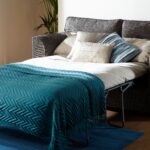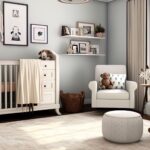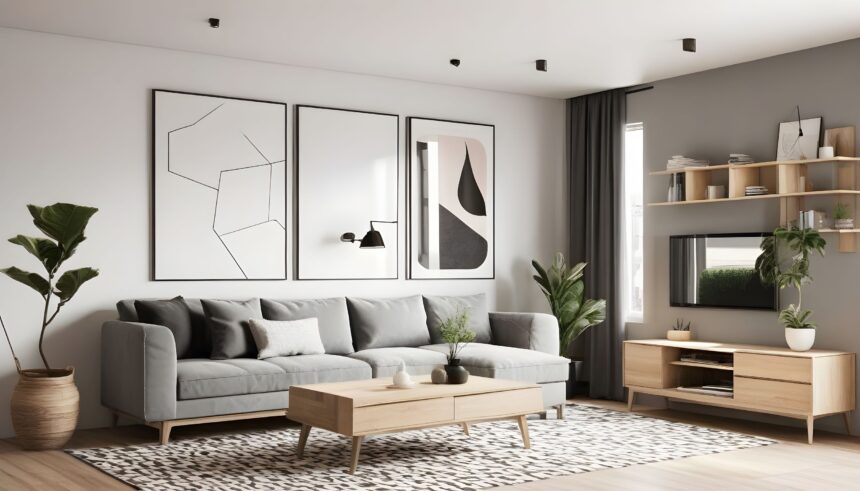Welcome, intrepid explorer, to the fascinating realm of furniture! Whether you’re a seasoned decorator or a wide-eyed first-time homeowner, this guide promises to be your compass on a transformative voyage through the vast seas of sofas, tables, and beyond. We’ll embark on a journey of discovery, unveiling the secrets hidden within each piece, and equipping you with the knowledge to chart your course toward a home that reflects your personality and enhances daily life.
Why furniture matters:
Furniture isn’t just about filling empty space; it’s the foundation of a home’s personality, functionality, and comfort. It shapes the flow of traffic, defines zones for different activities, and provides a platform for expressing your unique style. The right furniture can evoke warmth and belonging, inspire productivity, and create a haven for relaxation.
Embarking on your furniture adventure:
Now, let’s delve into the diverse world of furniture, exploring its various types, materials, functions, and styles. We’ll also touch on considerations such as user needs, sustainability, price range, and helpful tips for navigating the vast furniture landscape.
Types of Furniture: Unveiling the Building Blocks of Your Home
Now that we’ve established the significance of furniture, let’s dive deep into the diverse world of its types. Consider this section your map, guiding you through the essential pieces for each room in your home:
1. Living Room: A Canvas for Comfort and Connection
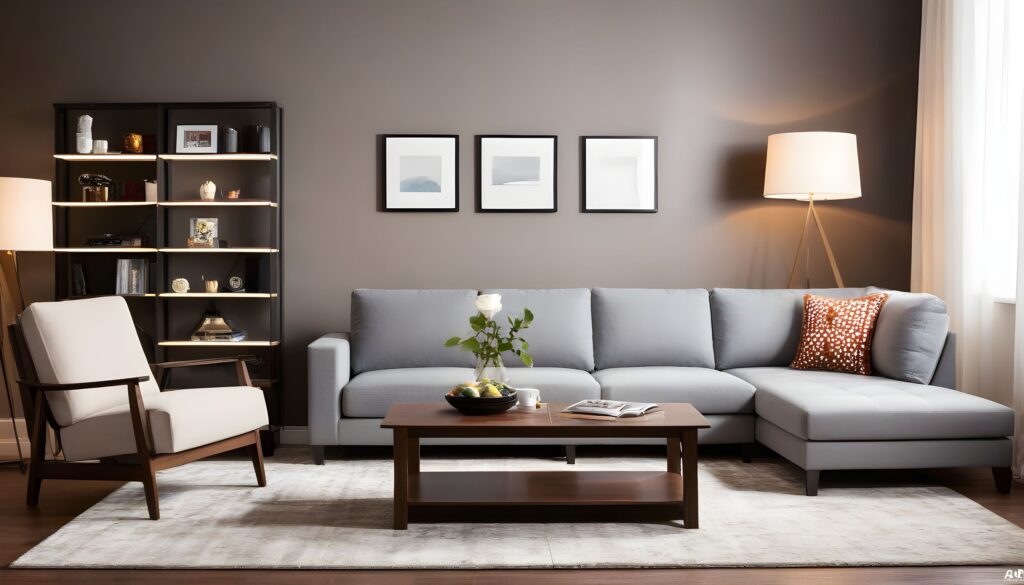
The living room lies at the heart of your home, a space for gathering, relaxing, and expressing your personal style. Each piece of furniture within its walls plays a vital role in shaping the overall atmosphere and functionality of this beloved haven.
Sofa: An undisputed king, the right sofa anchors the living room and invites both comfort and conversation. Imagine sinking into its plush cushions after a long day, or hosting lively gatherings where friends and family find laughter and connection. Sectional sofas offer ample seating for larger groups, while loveseats create a cozy corner for intimate conversations. When choosing a sofa, consider its size, material, and style to ensure it aligns with your space, usage needs, and aesthetic vision.
Armchair: A haven for quiet moments and introspection, the history of the armchair is full of relaxation and royalty, it provides a comfortable retreat for reading, listening to music, or simply enjoying the peace and quiet. Whether it boasts a classic wingback design or a sleek modern silhouette, the right armchair adds an element of personality and relaxation to your living room. I think investing in the armchair should be your priority because it’s easy to Care and Maintenance an Armchair
Coffee Table: More than just a surface for coffee and drinks, the coffee table becomes a central hub for activity. It serves as a platform for board games and puzzles, a resting place for your feet after a long day, and a stage for displaying decorative objects that reflect your personality. Choose a coffee table that complements your sofa in terms of size, style, and material, creating a cohesive and inviting environment.
TV Stand: A dedicated home for your entertainment system, the TV stand helps maintain a clutter-free and organized living space. Opt for a stand that offers ample storage for media devices, games, and movies, ensuring everything has its place while maintaining a clean and aesthetically pleasing environment.
Side Table: A versatile and functional sidekick, the side table offers valuable surface space next to a sofa or armchair. It provides a convenient spot for a lamp, a book, or a refreshing drink, adding both practicality and visual interest to your living room.
The Rug: Anchoring the space and defining the living room area, the right rug adds warmth, texture, and visual interest to your floor. Choose a rug that complements your overall color scheme and furniture choices, creating a unified and inviting atmosphere.
Bookcase: A testament to your intellectual pursuits and aesthetic sensibilities, the bookcase offers a platform to showcase your treasured stories and decorative objects. Whether it boasts a traditional wooden design or a modern glass-and-metal construction, the right bookcase becomes a focal point that adds personality and depth to your living room.
Fireplace: Crackling fire, warmth, and a sense of cozy ambiance – the fireplace evokes a timeless charm that draws people together. Whether it’s a traditional wood-burning hearth or a modern electric fireplace, its presence creates a captivating focal point and invites relaxation and connection.
Lighting: From soft ambient light that sets the mood for relaxation to focused task lighting for reading, the right lighting scheme is crucial for creating a comfortable and inviting living room. Consider using a combination of overhead lights, table lamps, and floor lamps to achieve the desired ambiance and cater to different activities within the space.
Beyond the Essentials: These are just the essential pieces that form the backbone of a comfortable and inviting living room. However, the possibilities are endless. Consider adding an ottoman for additional seating and storage, a media console for housing your electronics, or a decorative screen to divide the space. The key lies in choosing furniture that reflects your personality, lifestyle, and aesthetic preferences.
Remember, your living room is more than just a space; it’s an extension of your soul. So, don’t be afraid to experiment, mix and match styles, and create a haven that reflects your unique individuality and fosters connection and joy within your home.
2. Bedroom: A Sanctuary of Rest and Renewal
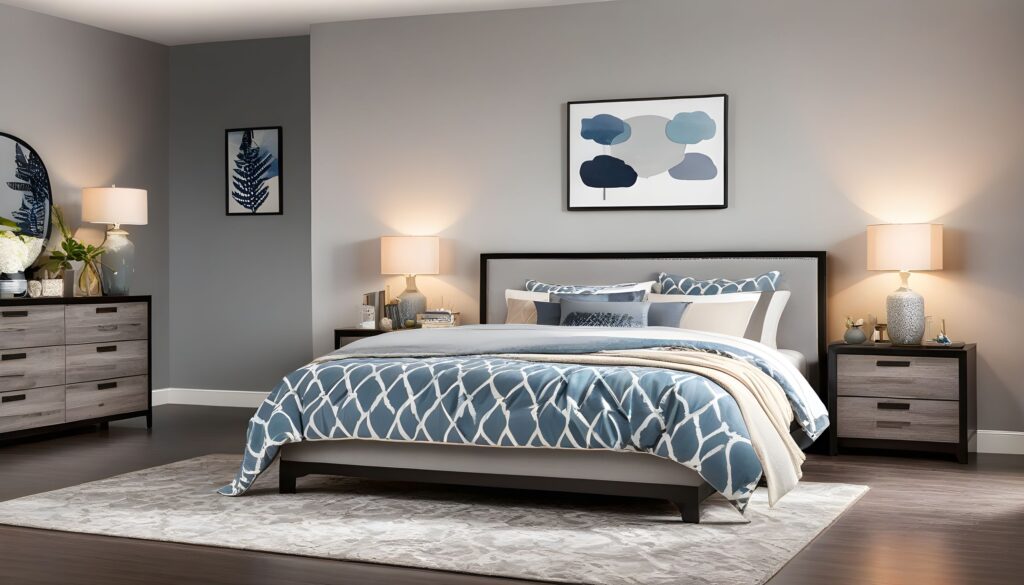
Step inside the bedroom, a haven of tranquility and rejuvenation. It’s a sanctuary where you shed the day’s anxieties and find solace in comfort and peace. Furnishing this intimate space requires careful consideration, as each piece contributes to the overall sense of calm and relaxation.
Bed: The undisputed centerpiece of the bedroom, the bed serves as a cradle of rest and rejuvenation. Whether you choose a king-size bed for spacious luxury or a cozy queen-size for a more intimate feel, ensure it offers the support and comfort necessary for a good night’s sleep. Consider the mattress type, choosing from options like memory foam, innerspring, or hybrid, based on your individual needs and preferences.
Bedding: Beyond the mattress, the right bedding plays a pivotal role in creating a sleep-conducive environment. Opt for sheets and blankets crafted from soft, breathable materials like cotton or linen, and choose colors and patterns that promote relaxation and tranquility. Don’t forget the importance of pillows, ensuring they offer the support and comfort your neck and head require for a restful night.
Dresser and Storage: Keeping your bedroom organized and clutter-free is essential for creating a peaceful and calming atmosphere. A spacious dresser provides ample storage for clothes, linens, and personal belongings, keeping your space clean and organized. Consider incorporating additional storage solutions like chests of drawers, closet organizers, and under-bed storage to maximize space and maintain a serene environment.
Nightstand: Acting as a loyal companion beside your bed, the nightstand offers a convenient and accessible surface for essential items. Place a lamp for bedtime reading, a clock to keep track of time, or a glass of water to quench your thirst in the night. Choose a nightstand that complements your overall bedroom style and provides ample space for your needs.
Curtains and Window Treatments: Controlling light and privacy is crucial for creating a restful sleep environment. Opt for curtains or blinds made from light-blocking materials to ensure darkness during sleep hours. Consider layering curtains for added visual interest and to adjust the light level throughout the day.
Other Essential Elements:
In addition to the core pieces, various other elements contribute to a serene and comfortable bedroom environment.
- Mirrors: Reflecting light and creating a sense of spaciousness, strategically placed mirrors can enhance the overall feel of your bedroom.
- Area Rugs: Adding warmth and texture underfoot, an area rug creates a cozy and inviting atmosphere. Choose a rug that complements your existing decor and provides a soft landing spot beside your bed.
- Armchair or Reading Nook: Dedicate a corner of your bedroom to relaxation and reading. A comfortable type of armchair or a dedicated reading nook with ample lighting provides a perfect escape for quiet moments and introspection.
- Plants: Bringing nature into your bedroom can promote relaxation and improve air quality. Choose plants known for their calming and purifying properties, like lavender or jasmine.
By carefully selecting and arranging your furniture, you can transform your bedroom from a mere sleeping space into a sanctuary of rest and renewal, a place where you can unwind, recharge, and awaken to each new day feeling refreshed and revitalized.
3. Kitchen & Dining: A Symphony of Function and Flavour
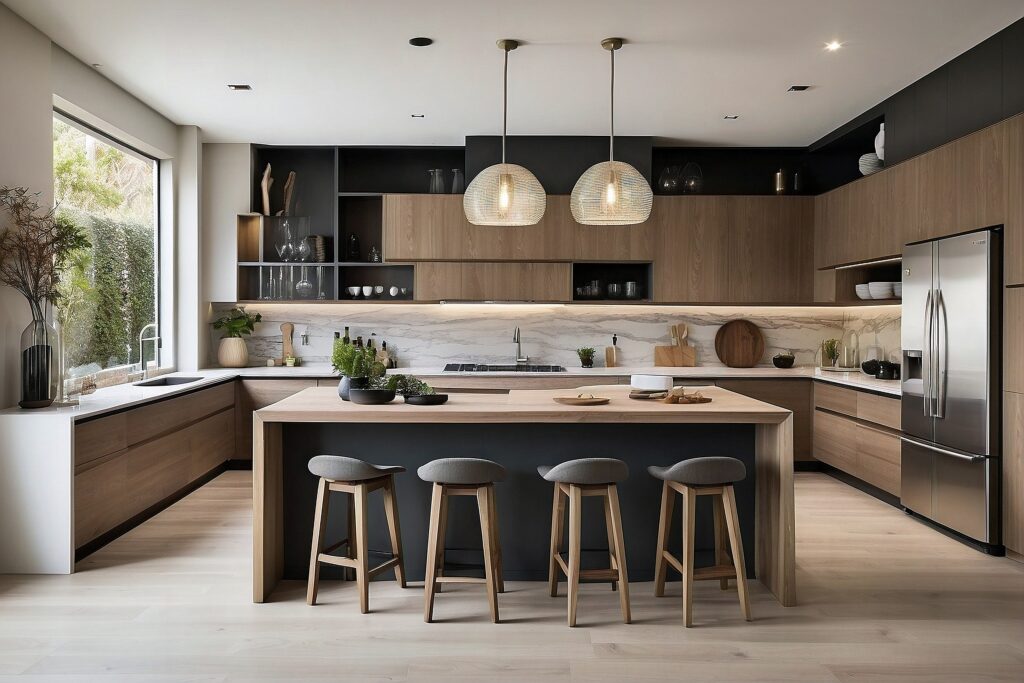
The kitchen and dining area stand as the heart of the home, a space where culinary creations take center stage, laughter fills the air, and memories are made over shared meals. From whipping up delicious dishes to enjoying intimate gatherings with loved ones, this multifaceted space requires furniture that is both functional and inviting.
The Table: The undisputed focal point of the dining area, the table serves as a platform for countless meals, conversations, and connections. Whether a spacious wooden table for family feasts or a sleek glass-and-metal table for intimate dinners, choose one that reflects your lifestyle and accommodates your entertaining needs.
The Chairs: Comfort and support are paramount when choosing the right dining chairs. Opt for chairs that provide adequate back and lumbar support for extended periods of sitting. Consider incorporating a mix of chairs and benches for added visual interest and seating flexibility.
Bar Stools: Adding versatility and functionality to your kitchen island or breakfast bar, bar stools offer additional seating options for casual meals, quick conversations, and enjoying morning coffee. Choose adjustable stools to accommodate different counter heights and ensure comfort for guests of all sizes.
Kitchen Island: More than just a countertop, the kitchen island has evolved into a multi-functional hub. It offers additional workspace for food preparation, provides storage for cookware and appliances, and serves as a social gathering spot for casual dining and conversation. Consider incorporating a breakfast bar into the design to create an inviting space for enjoying quick meals and coffee.
Cabinets and Storage: Keeping your kitchen organized and clutter-free is crucial for both functionality and aesthetics. Ample cabinets provide storage for food, cookware, dishes, and other kitchen essentials. Choose cabinets with pull-out drawers and lazy susans for easy access and maximize storage space within your kitchen.
Pantry: A dedicated space for storing dry goods, non-perishables, and pantry items, the pantry ensures your kitchen remains organized and clutter-free. Opt for a walk-in pantry for ample storage space or consider installing pantry cabinets to maximize storage within your existing layout.
Appliances: From ovens and refrigerators to dishwashers and microwaves, appliances are the unsung heroes of the kitchen. Choose energy-efficient models that meet your cooking needs and complement the overall style of your kitchen.
Cookware and Tableware: The tools of culinary creation and the vessels for delicious meals, cookware, and tableware play a vital role in the kitchen and dining experience. Invest in high-quality cookware that suits your cooking style and choose tableware that reflects your personal taste and complements your chosen setting.
Beyond the Essentials:
To enhance the functionality and enjoyment of your kitchen and dining space, consider incorporating additional elements:
- Kitchen Cart: Offering additional counter space and storage, a kitchen cart provides valuable flexibility and mobility within your kitchen.
- Wine Rack: For wine enthusiasts, a dedicated wine rack adds both function and visual interest to your kitchen or dining area.
- Buffet or Sideboard: Providing additional storage space for dishes, linens, and servingware, a buffet or sideboard enhances the functionality and elegance of your dining area.
- Pot Racks: Hanging pots and pans from a pot rack frees up valuable cabinet space and adds a decorative touch to your kitchen.
- Herb Garden: Fresh herbs add a burst of flavor to your culinary creations. Consider setting up a small herb garden on your windowsill or countertop for easy access and an added touch of greenery.
So, unleash your inner chef, gather your loved ones, and create a kitchen and dining area where delicious meals, laughter, and joy become the cornerstone of your home’s warmth and happiness.
4. Office Furniture: A haven for productivity and focus
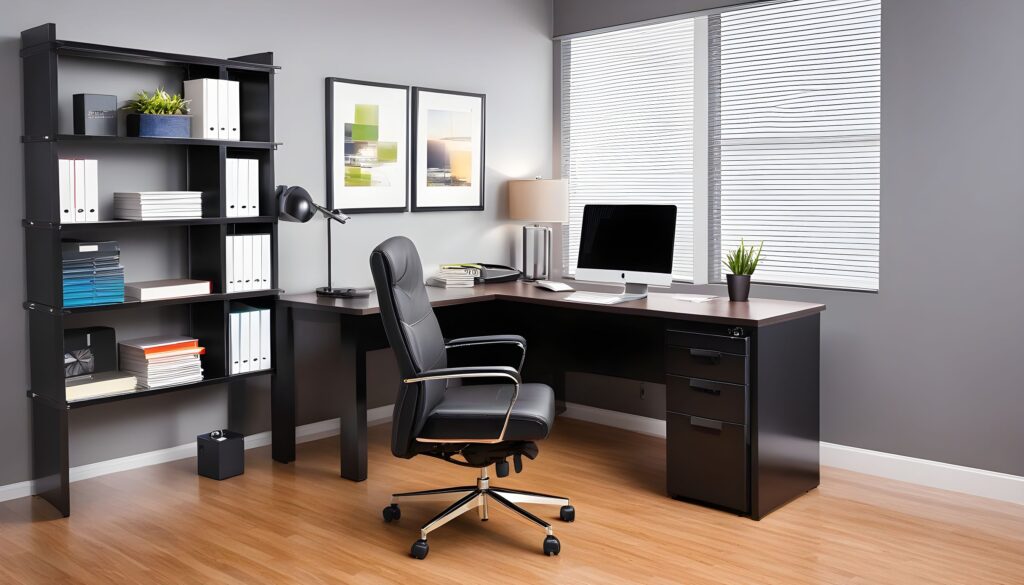
The office is the sanctum of productivity, a space dedicated to focused work, creative endeavors, and professional success. From crafting business proposals to brainstorming innovative ideas, this environment requires furniture that fosters efficiency, organization, and comfort for extended work sessions.
Office Desk: The undisputed centerpiece of any office, the desk serves as your command center, providing a dedicated workspace for tackling your daily tasks. Choose a desk that offers ample surface area for your computer, monitor, paperwork, and other essential tools. Consider adjustable desks for the flexibility to work standing or sitting, promoting good posture and reducing fatigue.
Office chair: Ergonomic and supportive, the right office chair is your essential partner in productivity. It should offer proper back support, armrests for comfortable typing, and adjustable features to accommodate your individual needs. Invest in a chair that minimizes discomfort and promotes good posture, preventing fatigue and potential health issues.
File Cabinet: Keeping your documents organized and readily accessible is crucial for efficient work. A spacious file cabinet provides a dedicated space to store files, paperwork, and office supplies, ensuring your workspace remains clutter-free and organized. Consider incorporating a lockable file cabinet for added security and peace of mind.
Bookcase: A haven for reference materials, professional journals, and inspirational books, the bookcase adds both functionality and personality to your office. Choose a bookcase that complements your existing furniture and provides ample storage space for your collection of books and office essentials.
Storage Cabinet: Additional storage is often essential for housing office supplies, equipment, and other professional materials. A dedicated storage cabinet helps you keep your workspace organized and prevents clutter from accumulating on your desk. Opt for cabinets with adjustable shelves for customizable storage solutions.
Printer and Monitor: Essential tools for everyday tasks, a printer and monitor are crucial additions to your office. Choose a printer that meets your printing needs and opt for a monitor with a large enough screen to comfortably view documents and presentations.
Office Supplies: From pens and paper to staplers and organizers, having the right office supplies within reach promotes productivity and efficiency. Invest in high-quality supplies that are aesthetically pleasing and functional, ensuring your workspace is both organized and inspiring.
Beyond the Essentials:
Enhance your office environment with additional elements that foster focus and inspiration:
- Whiteboard or Corkboard: A visual aid for brainstorming ideas, jotting down notes, and keeping track of upcoming deadlines.
- Lighting: Adjustable task lighting ensures optimal visibility for working on your computer or reading documents.
- Desk Organizer: Keep your workspace neat and organized with a dedicated desk organizer for pens, paper clips, and other small office essentials.
- Plants: Add a touch of nature and improve air quality with a few well-placed plants.
- Artwork or Motivational Quotes: Surround yourself with inspiring visuals to promote creativity and positive thinking.
Remember, your office is a reflection of your professional aspirations and personal style. Don’t be afraid to personalize your space with colors, textures, and decorative elements that inspire you and create an environment that fosters your unique brand of success.
5. Outdoor: Extending your living space into the great outdoors
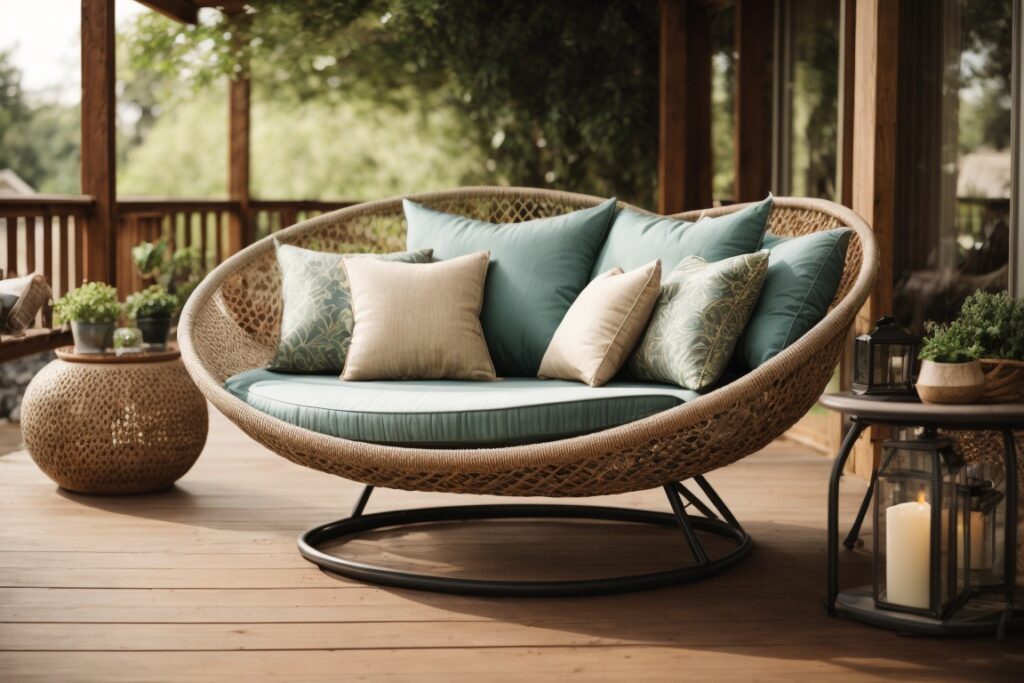
The outdoors beckons with its fresh air, sunshine, and endless possibilities for relaxation, entertainment, and connection with nature. Furniture plays a crucial role in transforming your outdoor space into a comfortable and inviting extension of your home, where you can unwind, enjoy the elements, and create lasting memories with loved ones.
Patio Furniture: Imagine lounging in the sun on a comfortable chaise lounge, hosting intimate gatherings under a starry sky, or enjoying delicious meals with friends and family around a spacious patio table. Patio furniture provides the seating and dining options you need to maximize the enjoyment of your outdoor space. Choose furniture that is weather-resistant and complements your patio’s size and style.
Deck Furniture: Elevate your deck into a haven for relaxation and entertainment. Opt for comfortable deck chairs, a spacious table for outdoor meals, and a hammock for swaying in the breeze. Consider adding a deck umbrella for shade on hot days and outdoor lighting to create a magical ambiance after sunset.
Lawn Furniture: Extend your relaxation zone beyond the patio and deck with comfortable lawn furniture. A strategically placed Adirondack chair or a spacious swing can become your favorite spot for soaking up the sunshine, enjoying a good book, or simply taking in the beauty of your surroundings.
Hammock: For ultimate relaxation and a touch of bohemian charm, consider adding a hammock to your outdoor space. String it between two trees or install a dedicated hammock stand, and let yourself be gently swayed by the breeze as you unwind and enjoy the peacefulness of nature.
Umbrella: A must-have for hot summer days, an umbrella provides shade and protection from the sun’s harsh rays. Choose a freestanding umbrella for optimal placement or consider a deck umbrella for a more permanent solution.
Fire Pit: Gather around a crackling fire pit for warmth, ambiance, and unforgettable evenings with loved ones. Roast marshmallows under the stars, share stories and enjoy the cozy glow of the fire. Opt for a gas or wood-burning fire pit based on your preferences and local regulations.
Grill: Transform your outdoor space into a culinary haven with a grill. Whether you prefer charcoal or gas, a grill allows you to create delicious meals and enjoy the taste of barbecued perfection. Consider adding a smoker to your arsenal for even more culinary possibilities.
Outdoor Lighting: Enhance the ambiance of your outdoor space and extend your enjoyment into the evening with outdoor lighting. String lights add a whimsical touch, while solar lanterns provide a soft glow and contribute to sustainability. Consider adding spotlights to illuminate specific areas or pathways.
Beyond the Essentials:
Here are some additional elements to enhance your outdoor haven:
- Outdoor rugs: Add a touch of color and texture to your patio or deck with a weather-resistant outdoor rug.
- Outdoor cushions: Add comfort and style to your patio furniture with colorful cushions.
- Outdoor pillows: Enhance the comfort and visual appeal of your outdoor seating with throw pillows.
- Storage solutions: Keep your outdoor space organized with storage bins or cabinets for cushions, blankets, and other outdoor essentials.
- Outdoor games and activities: Create a space for fun and entertainment with outdoor games like cornhole or badminton, or set up a dedicated area for activities like yoga or meditation.
Material of furniture:
Furniture isn’t just about form and function; the materials it’s crafted from play a crucial role in its appearance, durability, and overall character. Let’s delve into the fascinating world of furniture materials, uncovering their unique qualities and exploring their suitability for different needs and aesthetics.
1. Wood: Exploring the Warmth and Character of a Timeless Material
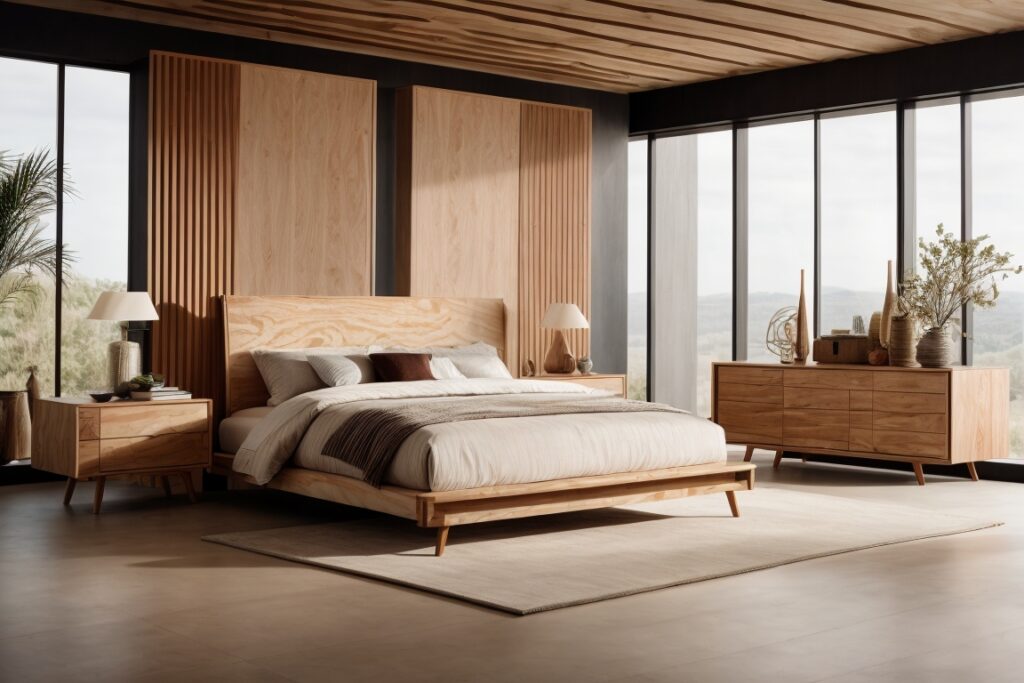
Wood, a timeless and versatile material, has graced homes for centuries, lending an undeniable warmth and character to any space. Its inherent strength, durability, and natural beauty have made it a cornerstone of furniture design, inspiring generations of artisans and homeowners alike.
Solid Wood: Solid wood stands as the crown jewel of the wood family. Crafted from a single piece of timber, it exudes a sense of luxury and enduring value. Its natural grain patterns and unique variations tell a story of nature’s artistry, adding depth and character to any room. From the rich mahogany dining table to the handcrafted oak bookcase, solid wood furniture embodies a timeless elegance that transcends trends.
Plywood: Strength and Versatility in Every Layer: While offering a more budget-friendly alternative to solid wood, plywood delivers strength and versatility in equal measure. Its construction, featuring layers of glued wood veneers, creates a stable and durable surface suitable for a wide range of furniture pieces. Plywood’s adaptability allows for complex designs and curvatures, making it a popular choice for contemporary furniture and innovative creations.
Veneer: Unveiling the Beauty of Wood with a Touch of Practicality: For those seeking the aesthetic allure of solid wood at an accessible price, veneer offers a perfect solution. This thin layer of real wood applied to a core material like plywood or MDF provides the natural beauty of wood grains and textures without the cost implications. Veneer allows for a wider range of colors and finishes, making it a versatile option for modern and traditional designs alike.
Laminate: A Durable and Affordable Option: Laminate, a synthetic material that replicates the look of wood, offers an affordable alternative without compromising on durability. Its resistance to scratches, stains, and fading makes it ideal for high-traffic areas and families with children. With a vast array of colors and textures available, laminate allows for creative expression and personalization while maintaining a budget-conscious approach.
MDF: A Smooth Canvas for Contemporary Designs: For those drawn to clean lines and contemporary aesthetics, MDF (medium-density fiberboard) provides a perfect canvas. This engineered wood product is made from compressed wood fibers, resulting in a smooth and paintable surface ideal for modern furniture pieces. MDF’s versatility allows for intricate designs and sharp edges, making it a popular choice for sleek and contemporary furniture styles.
Beyond the Basics: Exploring a World of Wood Choices:
The world of wood extends far beyond these core options. From the exotic beauty of mahogany and walnut to the rustic charm of reclaimed wood and barnwood, each variety offers unique properties and visual appeal. Consider the following factors when selecting the perfect wood for your furniture:
- Strength and Durability: Will the piece be used frequently and need to withstand wear and tear?
- Moisture Resistance: Is the furniture intended for a bathroom, kitchen, or outdoor space?
- Color and Texture: Does the wood’s natural grain and color palette complement your desired aesthetic?
- Sustainability: Choose sustainably sourced wood to minimize environmental impact.
Overall, wood is a living material. It will age and change over time, developing a patina that tells the story of your home and its inhabitants. Embrace this natural evolution and enjoy the unique charm that wood furniture brings to your haven.
2. Metal: Exploring a Material of Versatility and Style
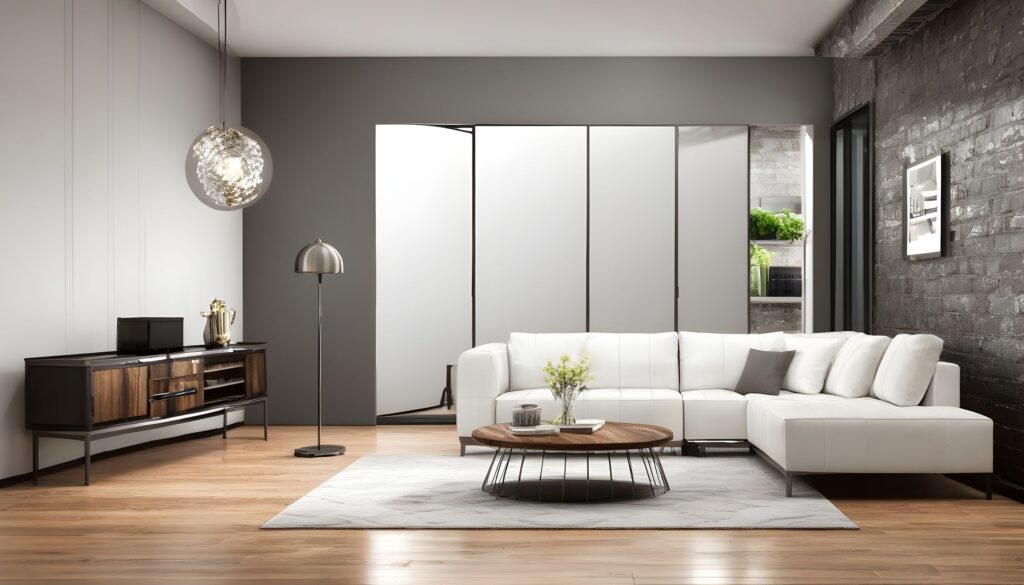
Metal, a material synonymous with strength, durability, and a modern aesthetic has become an increasingly popular choice in furniture design. Its inherent sleekness and inherent resistance to wear and tear make it ideal for a variety of applications, from industrial-inspired dining tables to contemporary outdoor furniture.
Steel: A Versatile Canvas for Bold Designs: Steel, a strong and versatile metal, forms the backbone of many modern furniture pieces. Its industrial appeal adds a touch of boldness and contemporary flair to any space. In its natural form, it imparts a raw and authentic feel, while powder coating allows for a wide range of color options and finishes. Steel’s strength makes it perfect for furniture that needs to stand up to daily wear and tear, such as kitchen appliances and outdoor furniture.
Aluminum: The Lightweight Champion of Outdoor Spaces: Aluminum, a lightweight and rust-resistant metal, is a champion for outdoor furniture. Its resistance to weather and UV rays ensures longevity and minimal maintenance, making it ideal for enjoying the outdoors year-round. Aluminum furniture often boasts a clean and modern aesthetic, adding a touch of sophistication to your patio or deck. Its lightweight nature also makes it easy to move and rearrange, allowing for flexible use of your outdoor space.
Stainless Steel: A Symbol of Cleanliness and Modernity: Stainless steel embodies contemporary elegance with its gleaming surface and resistance to rust and corrosion. It’s a popular choice for kitchen appliances, countertops, and furniture due to its hygienic properties and ease of cleaning. The modern aesthetic of stainless steel adds a sleek and minimalist touch to any space, making it a perfect fit for kitchens and other contemporary settings.
Wrought Iron: A Touch of Rustic Charm: Wrought iron, hand-forged and shaped, adds a touch of rustic charm and old-world character to any space. Its unique handcrafted nature and intricate details lend an undeniable charm to furniture pieces, from statement lighting fixtures to intricately designed tables and chairs. While wrought iron requires regular maintenance to prevent rust, its timeless beauty and enduring charm make it a worthwhile investment for those seeking a touch of history and character in their homes.
Beyond the Basics: Unveiling the World of Metal Finishes: The versatility of metal extends beyond its inherent properties. Explore a range of finishes to add depth and personality to your furniture:
- Brushed: This creates a textured and contemporary look.
- Polished: Offers a reflective and sleek finish, highlighting the natural beauty of the metal.
- Powder-coated: Available in a vast array of colors, providing endless possibilities for customization and personal expression.
- Patina: A naturally occurring aged finish that adds a touch of vintage charm and character.
3. Upholstery: A Journey Through Fabrics and Textures
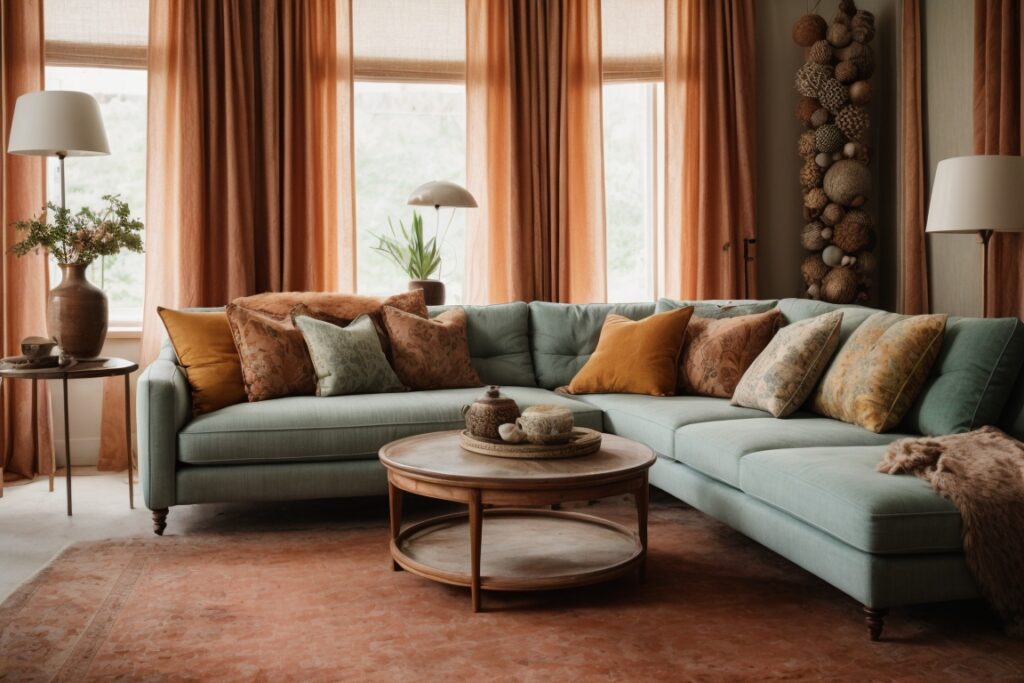
Upholstery, more than just a covering, breathes life and comfort into furniture, transforming it from mere functional objects into inviting havens of relaxation and expression. From the soft embrace of a plush armchair to the vibrant pop of color on a statement sofa, the choice of upholstery fabric plays a crucial role in shaping the aesthetic and ambiance of your space.
Fabric: A Canvas for Personal Expression: Fabrics offer an unparalleled level of customization and personal expression in the world of upholstery. From natural materials like cotton and linen to synthetic blends that combine durability with affordability, the possibilities are endless. Explore a world of textures, patterns, and colors to find the perfect fabric that reflects your unique style and complements your existing decor.
Cotton: A Timeless Classic: Cotton, a natural and breathable fabric, offers enduring comfort and a timeless appeal. Its versatility makes it suitable for a variety of styles, from casual slipcovers to elegant damasks. Choose cotton upholstery for a relaxed and inviting atmosphere in your living space.
Linen: A Touch of Natural Elegance: Linen, known for its luxurious texture and natural beauty, adds a touch of sophistication to any piece of furniture. Its superior strength and durability make it a long-lasting choice ideal for high-traffic areas. Choose linen upholstery for a classic and elegant look that transcends trends.
Velvet: A Luxurious Embrace: Velvet, synonymous with luxury and opulence, creates a sense of drama and sophistication in any space. Its soft and inviting texture offers unparalleled comfort and encourages relaxation. Choose velvet upholstery for statement pieces like armchairs or ottomans to add a touch of glamour and elegance to your living space.
Microfiber: Durability and Stain Resistance: Microfiber, a synthetic fabric known for its durability and stain resistance, is a practical choice for families with children or pets. Its ease of upkeep makes it excellent for everyday usage. Choose microfiber upholstery for pieces that need to withstand spills and wear and tear.
Faux Leather: Affordable Luxury: Faux leather, offering the look and feel of real leather at a fraction of the cost, is a popular choice for modern and contemporary furniture. Its durability and ease of cleaning make it a practical solution for high-traffic areas. Choose faux leather upholstery for a stylish and affordable update to your living space.
Beyond Fabrics: Exploring the World of Textures:
Texture plays a vital role in creating visual interest and enhancing the aesthetic appeal of upholstered furniture. Explore a world of textures beyond the standard smooth fabrics:
- Bouclé: This looped yarn fabric adds a touch of whimsy and visual interest.
- Chenille: This soft and plush fabric offers a luxurious feel and inviting texture.
- Tweed: This textured fabric adds a touch of rustic charm and vintage appeal.
- Velvet with a Crushed Effect: This textured version of velvet adds depth and dimension to the fabric.
Upholstery: More than Just Beauty:
Upholstery isn’t just about aesthetics; it also plays a crucial role in comfort and functionality. Consider the following factors when choosing upholstery fabrics:
- Durability: Opt for fabrics that can withstand daily wear and tear, especially for pieces in high-traffic areas.
- Ease of Cleaning: Choose fabrics that are easy to clean and maintain, especially if you have children or pets.
- Comfort: Select fabrics that are soft and inviting to the touch, ensuring ultimate comfort during relaxation.
- Fire Resistance: Consider fire-resistant fabrics for added safety, particularly for upholstered furniture near fireplaces or heat sources.
Remember, upholstery is an investment that will add beauty and comfort to your home for years to come. Choose wisely and enjoy the unique character and inviting atmosphere that beautifully upholstered furniture brings to your living space.
4. Glass: A Material for Light and Openness
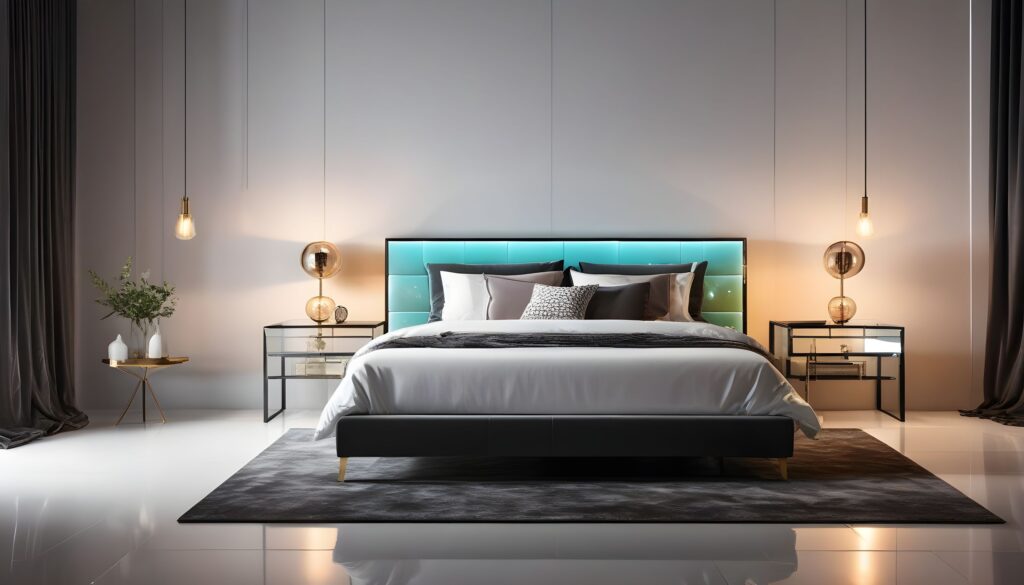
Glass, a material synonymous with transparency and light, has captivated architects and designers for centuries. Its inherent elegance and ability to create a sense of openness make it a popular choice for furniture design, adding a touch of sophistication and modern flair to any space.
Tempered Glass, Strength and Safety Combined: Tempered glass, subjected to a heat treatment process, is significantly stronger and more durable than standard glass. Its increased resistance to breakage and shattering makes it a safe and reliable choice for furniture applications, particularly for tabletops, shelves, and other exposed surfaces.
Frosted Glass: Privacy and Diffused Light: Frosted glass, with its translucent finish, offers a solution for creating privacy while maintaining light transmission. This makes it ideal for bathroom doors, glass partitions, and furniture components where privacy is desired without sacrificing natural light. The frosted finish also adds a unique aesthetic appeal, creating a soft and diffused effect.
Stained Glass: A Symphony of Color and Light: Stained glass, a true work of art, transforms light into vibrant hues and intricate patterns. It adds a touch of history and grandeur to furniture pieces, making them unique conversation starters and focal points. Stained glass can be incorporated into doors, cabinets, and decorative elements, adding a touch of magic and color to your living space.
Beyond the Basics: Exploring the World of Glass Finishes:
The versatility of glass extends beyond its basic forms. Explore a range of finishes to customize the look and feel of your furniture:
- Acid-etched glass: Similar to frosted glass but with a more textured and opaque finish.
- Mirrored glass: Creates an illusion of space and reflects light, making the space feel larger and brighter.
- Laminated glass: Offers increased strength and safety by combining multiple layers of glass with a polymer interlayer.
- Textured glass: Adds visual interest and dimension with its unique patterns and designs.
5. Plastic: A Material for Everyday Living
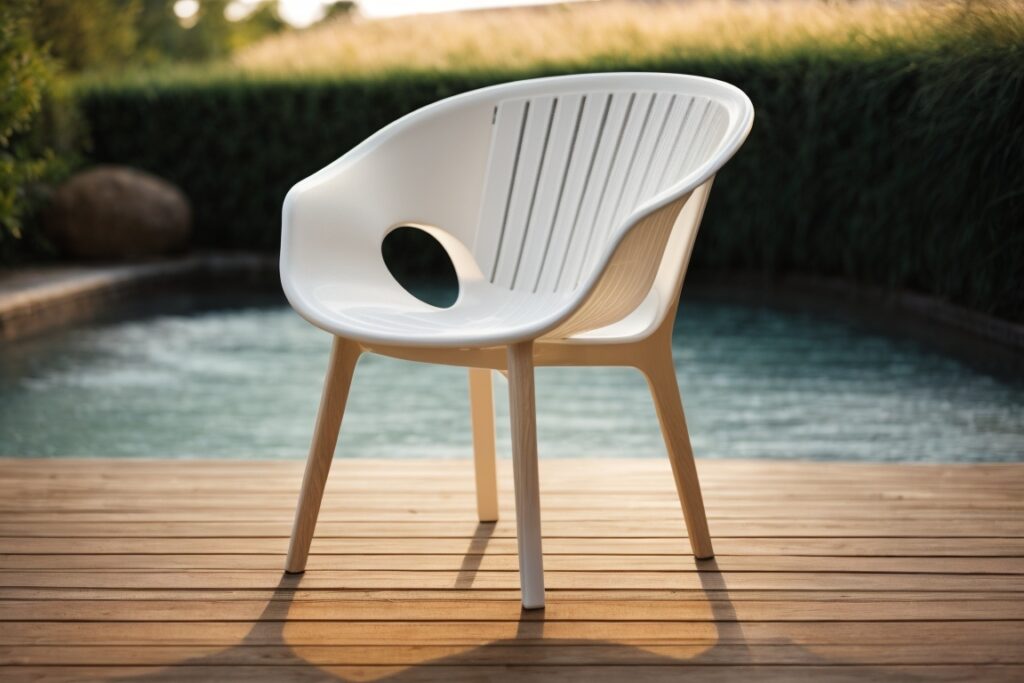
Plastic, often underestimated and misunderstood, plays a significant role in our everyday lives. Its undeniable versatility, affordability, and durability make it a popular choice for furniture design, offering practical solutions for a variety of spaces and needs.
Polypropylene: A Lightweight Champion: Polypropylene, known for its lightweight nature and high strength, is a popular choice for chairs, tables, and outdoor furniture. Its resistance to moisture and UV rays makes it ideal for outdoor use, while its affordability and ease of cleaning make it a practical choice for everyday furniture.
Polyethylene: The All-Weather Hero: Polyethylene, offering superior resistance to weather and UV rays, is a champion for outdoor furniture. From comfortable Adirondack chairs to weatherproof storage containers, polyethylene furniture can withstand the elements and retain its color and integrity for years to come.
Vinyl: A Touch of Comfort and Versatility: Vinyl, known for its flexibility and wide range of colors and textures, is a popular choice for upholstery, flooring, and other furniture components. Its soft and comfortable texture makes it ideal for seating surfaces, while its durability and resistance to stains and spills make it practical for high-traffic areas.
ABS Plastic: A Champion for Strength and Design: ABS plastic, known for its high strength and impact resistance, is often used for furniture components that require durability and structural integrity. Its smooth finish and paintable surface make it versatile for various design applications, adding a touch of sleekness and modernity to furniture pieces.
Beyond the Basics: Exploring the World of Plastic Finishes:
Plastic furniture offers a wide range of finishes and textures to suit your desired style and aesthetic:
- Glossy finish: This creates a modern and sleek look, reflecting light and adding visual interest.
- Matte finish: Provides a more natural and understated look, minimizing glare and fingerprints.
- Textured finish: Adds visual interest and dimension, mimicking the look of natural materials like wood or leather.
- Rattan-inspired: Provides a touch of rustic charm and outdoor appeal, ideal for patio furniture and casual settings.
Plastic: More Than Just Affordability:
While affordability is a major advantage of plastic furniture, its benefits extend far beyond price. Its lightweight nature makes it easy to move and rearrange, while its durability and resistance to moisture and stains make it a practical choice for everyday use. Additionally, plastic furniture often requires minimal maintenance, making it a low-maintenance option for busy families and individuals.
Choosing the Right Plastic:
When selecting plastic furniture, consider the following factors:
- Purpose: Choose a plastic type that is suitable for the intended use and environment.
- Durability: Opt for a plastic with high strength and resistance to wear and tear.
- UV resistance: Choose UV-resistant plastic for outdoor furniture to prevent fading and cracking.
- Sustainability: Consider recycled plastic options to minimize environmental impact.
Embrace the versatility and practicality of plastic furniture. It can be a valuable addition to your home, offering comfort, functionality, and style without breaking the bank. Remember, plastic furniture has come a long way, and its potential in modern living is undeniable.
By Function: Exploring the Purposeful World of Furniture
Furniture isn’t just about aesthetics; it serves a vital role in shaping the functionality and comfort of our living spaces. Each piece plays a distinct part in facilitating our daily activities and transforming our homes into havens of comfort and productivity. Let’s delve into the diverse world of furniture functions, uncovering the purpose behind each design and appreciating their contribution to our daily lives.
1. Seating: A Journey through Comfort and Style
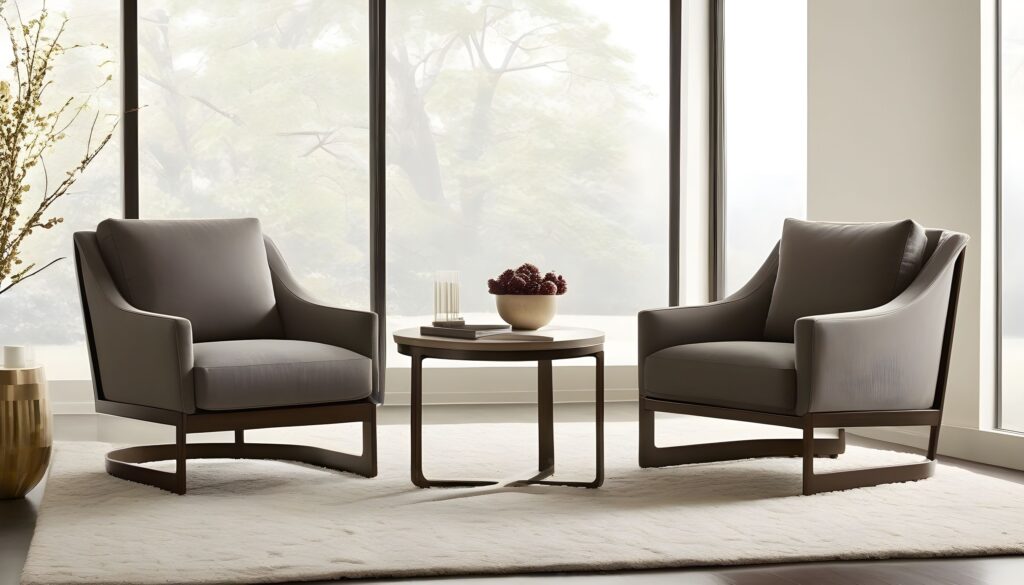
Seating, often considered the heart of any living space, plays a crucial role in fostering comfort, functionality, and visual appeal. From plush armchairs to sleek bar stools, each seating option offers unique benefits and contributes to the overall atmosphere of your home. Embark on a journey through the diverse world of seating and discover the perfect pieces to enhance your living space.
Sofa: The undisputed king of seating, the sofa serves as a central gathering point for relaxation, entertainment, and conversation. Consider its size and shape to ensure it fits your space and accommodates your needs. Explore a variety of styles, from classic Chesterfields to modern sectionals, and choose upholstery that reflects your desired aesthetic and provides optimal comfort.
The Armchair: A Throne of Comfort: For moments of quiet reading or intimate conversations, the Benefits of having an armchair are related to comfort, The armchair offers a haven of Relaxation and solitude. Opt for plush cushioning, supportive contours, and a design that complements your existing furniture and decor. Consider features like swivel bases and recliners for added functionality and relaxation.
The Dining Chair: A Bridge Between Meal and Conversation: The dining chair sets the stage for memorable meals and engaging conversations. Choose chairs that provide adequate back support and comfort for extended periods of sitting. Consider a mix of chairs and benches for added visual interest and seating flexibility.
The Bar Stool: A Casual Perch for Social Gatherings: Adding a touch of casual elegance, bar stools provide additional seating options for kitchen islands, breakfast bars, and home bars. Adjustable stools offer flexibility to accommodate different counter heights and ensure comfort for guests of all sizes.
The Ottoman: A Multifaceted Companion: The ottoman, a versatile piece of furniture, functions as a footrest, additional seating, and even a coffee table. Choose an ottoman with storage options to maximize space utilization or opt for a decorative piece that adds a touch of color and texture to your living space.
Beyond the Basics: Exploring the Diverse World of Seating:
The world of seating extends far beyond these core options. Explore the following seating elements to create a personalized and functional living space:
- Loveseats: Perfect for smaller spaces or intimate conversations.
- Chaise lounges: Ideal for relaxation and reading, offering extended leg support.
- Benches: Provide additional seating and add a casual touch to your living space.
- Beanbag chairs: Offer casual comfort for children and adults alike.
- Outdoor seating: Opt for weather-resistant options for your patio, deck, or porch.
Choosing the Perfect Seat:
When selecting seating, consider the following factors:
- Functionality: How will the seating be used?
- Style: Select things that suit your current décor.
- Comfort: Opt for chairs with supportive features and comfortable upholstery.
- Size and scale: Ensure the seating is proportionate to your space.
- Material: Choose materials that are long-lasting and easy to maintain.
Remember, seating is an investment that will serve you for years to come. Choose wisely and embrace the comfort, functionality, and aesthetic appeal that the perfect seating pieces can bring to your home.
2. Storage Symphony:
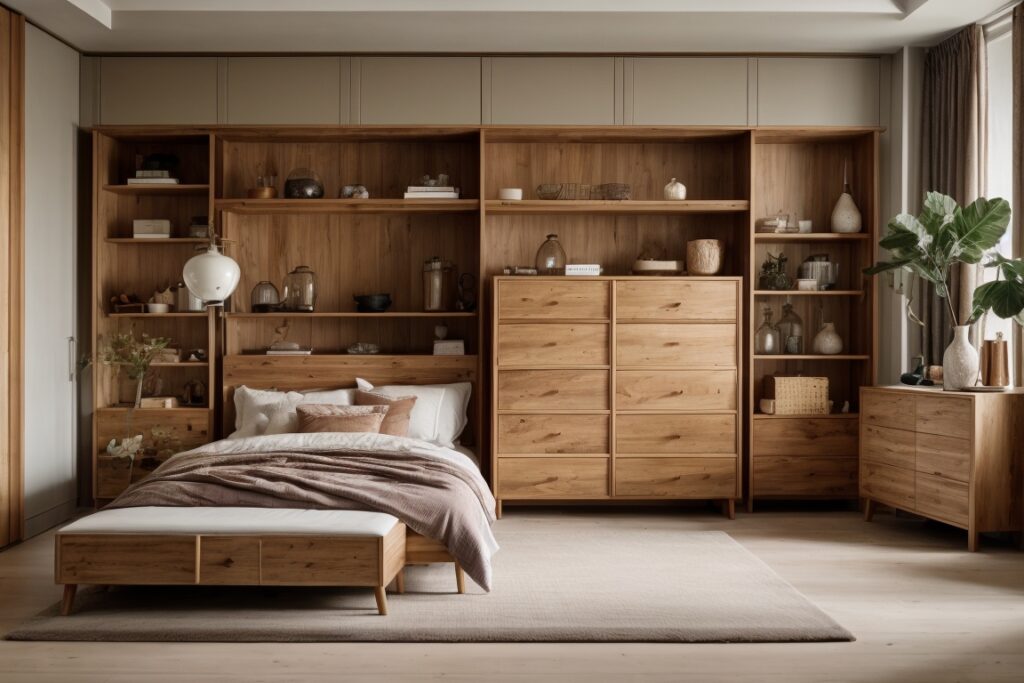
Storage furniture plays a vital role in maintaining a tidy and organized home. Beyond fulfilling their practical function, these pieces can also enhance the aesthetics and functionality of your living space. Let’s delve deeper into the world of storage furniture and explore the unique features and benefits of dressers, chests of drawers, bookcases, cabinets, and shelves.
Dressers:
- Tall and versatile: Dressers offer ample storage with drawers of varying sizes, ideal for organizing clothes, linens, and other personal belongings.
- Compartmentalized organization: Drawers with dividers and organizers help categorize and neatly store various items, making it easy to find what you need.
- Mirrored variations: Dressers with integrated mirrors offer dual functionality as storage and vanity space, saving space and enhancing convenience.
- Modern and traditional styles: Dressers come in a vast array of styles, from sleek and modern designs to classic and ornate options, allowing you to choose one that complements your existing decor.
- Additional features: Some dressers incorporate additional features like built-in charging stations or hidden compartments, adding functionality and convenience.
Chests of Drawers:
- Spacious and versatile: Chests of drawers offer generous storage space with deep drawers, making them ideal for storing bulky items like blankets, towels, and seasonal clothing.
- Horizontal design: The horizontal orientation of chests of drawers maximizes storage space without taking up too much floor space, making them suitable for smaller rooms.
- Minimalist aesthetic: Chests of drawers often feature clean lines and a minimalist design, adding a touch of sophistication and elegance to any space.
- Multi-functionality: Some chests of drawers can be repurposed as TV stands, media consoles, or even bathroom vanities, offering additional versatility and functionality.
- Durable construction: Built to withstand heavy loads, chests of drawers are a long-lasting storage solution.
Bookcases:
- Dedicated storage for books: Bookcases offer adjustable shelves and ample space to organize and display your book collection, keeping them readily accessible and protected.
- Vertical storage: Bookcases maximize vertical space, making them ideal for smaller rooms or areas with limited floor space.
- Multi-functional display: Bookcases can also be used to display decorative items, family photos, artwork, or other treasured possessions.
- Variety of styles: Bookcases come in a wide variety of styles, materials, and finishes, allowing you to find one that complements your existing furniture and decor.
- Open or closed storage: Choose between open bookcases for easy access and visual appeal, or closed bookcases with doors for dust protection and a more streamlined look.
Cabinets:
- Concealed storage: Cabinets offer enclosed storage space, keeping belongings hidden and protected from dust and damage.
- Customizable storage: With adjustable shelves, cabinets can be adapted to accommodate items of different sizes and shapes, maximizing storage efficiency.
- Multi-functional use: Cabinets can be used for a variety of purposes, from storing kitchenware and pantry items to displaying collectibles and decorative objects.
- Variety of materials: Choose from cabinets made of wood, metal, glass, or a combination of materials to suit your desired aesthetic and budget.
- Freestanding or built-in: Opt for freestanding cabinets for flexible placement or built-in cabinets for a more streamlined and integrated look.
Shelves:
- Simple and versatile: Shelves offer a simple yet effective storage solution, allowing you to display and organize books, decorative items, plants, and other belongings.
- Space-saving: Shelves can be mounted on walls, maximizing vertical space and freeing up floor space for furniture or other activities.
- Customizable layout: Shelves can be arranged in various configurations, allowing you to create a personalized storage solution that fits your specific needs and preferences.
- Minimalist aesthetic: Floating shelves offer a minimalist and contemporary look, contributing to a clean and uncluttered space.
- Multi-material options: Choose from shelves made of wood, metal, glass, or acrylic to achieve your desired aesthetic and functionality.
By understanding the diverse features and benefits of each type of storage furniture, you can choose the pieces that best suit your needs and preferences. Maximize your storage space, organize your belongings efficiently, and create a visually appealing and functional living space that reflects your personal style.
3. Sleep: Exploring the World of Sleeping Solutions
Sleep, the cornerstone of our physical and mental well-being, requires a dedicated haven for rejuvenation and restoration. This haven, often referred to as the “sleeping space,” goes beyond just a bed and mattress; it’s a complete environment designed to promote restful sleep and wake you feeling refreshed and energized.

Mattress: The mattress, the central element of any sleeping space, plays a crucial role in supporting your body and ensuring optimal spinal alignment. Explore a variety of mattress types, including innerspring, memory foam, latex, and hybrid, each offering unique benefits and catering to different sleep preferences. Consider factors like firmness level, pressure relief, and temperature regulation when making your selection.
Bed Frames and Bedding: The bed frame provides the structure and aesthetic foundation for your sleeping space. Choose from a variety of styles, materials, and designs to complement your desired look and feel. Invest in high-quality bedding, including pillows, sheets, and blankets, made from breathable and comfortable materials that promote sleep.
Setting the Mood: Lighting and Ambiance: Lighting plays a critical role in creating a sleep-conducive environment. Opt for warm and dim lighting solutions, such as bedside lamps or sconces, to avoid disrupting your natural sleep cycle. Consider incorporating blackout curtains or blinds to block out unwanted light and create a more restful atmosphere.
Calming the Senses: Sound and Temperature: Minimize noise pollution in your sleeping space by using earplugs or a sound machine. Invest in a comfortable room temperature, ideally around 65°F, to promote deeper sleep. Consider utilizing essential oils or diffusers with calming scents like lavender or chamomile to further enhance relaxation before sleep.
Beyond the Basics: Exploring Sleep-Enhancing Technologies:
Technology can offer innovative solutions to enhance your sleep experience:
- Smart mattresses: Monitor sleep patterns and adjust temperature and firmness for personalized comfort.
- Noise-canceling headphones: Block out unwanted noise and promote deeper sleep.
- Sleep trackers: Monitor sleep quality and provide insights for improving sleep habits.
- Smart lighting: Automatically adjust light intensity and color temperature to optimize sleep-wake cycles.
Creating a Sleep Sanctuary:
To create a truly restorative sleeping space, consider the following:
- Declutter and personalize: Remove unnecessary items and add calming elements like plants or personal touches.
- Establish a sleep schedule: Go to bed and wake up at consistent times, even on weekends.
- Develop a relaxing bedtime routine: Engage in activities that promote relaxation, such as reading, taking a warm bath, or meditating.
- Limit screen time before bed: The blue light emitted from electronic devices can disrupt your sleep cycle.
- Exercise regularly: Physical activity can improve sleep quality, but avoid strenuous workouts close to bedtime.
Sleeping: An Investment in Well-being:
Investing in a comfortable and sleep-conducive environment is an investment in your overall well-being. By prioritizing quality sleep, you can wake up feeling refreshed and energized, ready to tackle the day with renewed focus and clarity. Remember, sleep is not a luxury; it’s a necessity for optimal physical and mental health.
Embrace the sanctuary of sleep and unlock a world of rejuvenation and improved well-being. By creating a dedicated sleeping space that promotes relaxation and comfort, you can embark on a journey towards deeper, more restful sleep, and wake up feeling ready to conquer every day.
4. Dining: A Culinary Journey through Functionality and Style
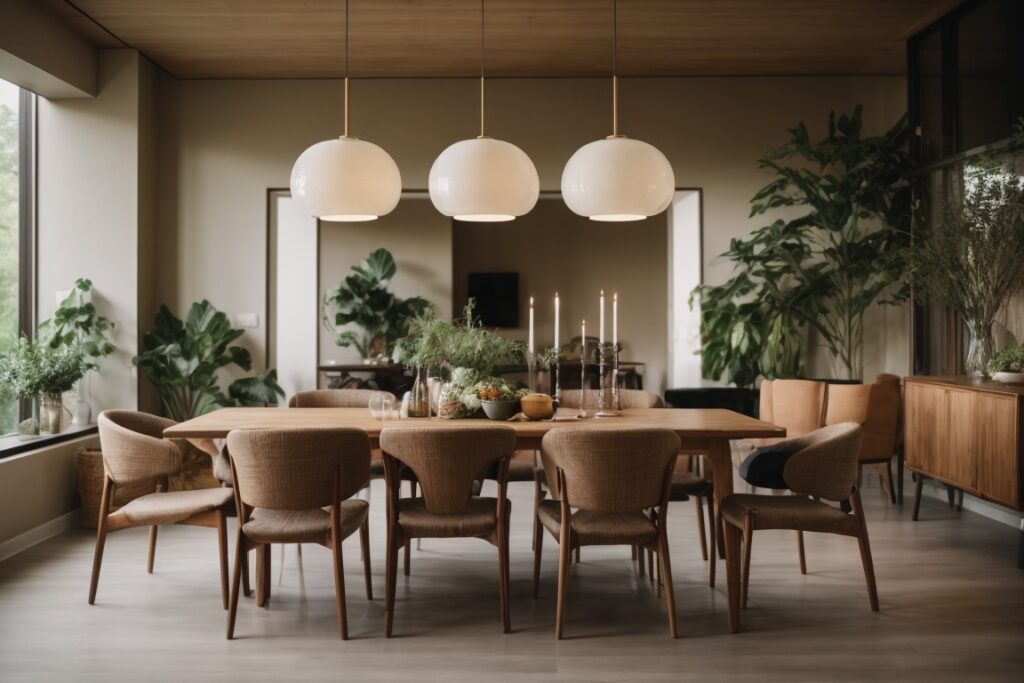
Dining, more than just a functional necessity, is a cornerstone of social interaction, cultural expression, and culinary exploration. From intimate meals to lively gatherings, the dining space serves as a stage for shared experiences and the creation of lasting memories. Let’s embark on a journey through the diverse world of dining, exploring elements that contribute to a functional and stylish dining experience.
Dining Table: The dining table, the heart of any dining space, provides a platform for conversation and culinary enjoyment. Choose a table that accommodates your seating needs and offers ample surface space for serving dishes and beverages. Consider the shape and material of the table—round tables promote interaction, while rectangular ones offer more formal seating arrangements. Opt for wood or metal tables for durability and a timeless look, or explore modern materials like glass or concrete for a unique aesthetic.
Dining Chairs: Dining chairs provide comfort and support during meals, setting the tone for the dining experience. Choose chairs that complement the style of your table and offer adequate back support and armrests. Explore a variety of upholstery options, from leather and fabric to rattan and wood, to personalize your dining space and enhance its visual appeal.
Storage Solutions for Culinary Essentials: Maximize your dining space by incorporating storage solutions that keep essentials organized and readily accessible. Consider sideboards, buffets, or china cabinets to store tableware, linens, and serving dishes. Utilize wall space with shelves or hanging rails for displaying decorative items and cookbooks. Opt for built-in storage options or freestanding units to suit your space and needs.
Lighting the Way to a Delightful Dinner: Lighting plays a crucial role in setting the mood for your dining experience. Opt for warm and inviting lighting fixtures, such as pendant lights or chandeliers, to illuminate the table and create a welcoming atmosphere. Consider adding dimmer switches for adjustable lighting to suit different occasions.
Setting the Stage for Culinary Delights:
Beyond the basics, explore elements that add personality and enhance the dining experience:
- Tablecloths and runners: Dress your table for different occasions with tablecloths and runners made from various materials like linen, cotton, or silk.
- Tableware and glassware: Choose tableware and glassware that complement your table setting and reflect your personal style.
- Centerpieces: Add a touch of elegance with centerpieces that enhance the visual appeal of your dining space.
- Placemats and napkins: Utilize placemats and napkins to add color, texture, and a touch of formality to your dining table.
- Flowers and greenery: Fresh flowers or greenery add a touch of nature and beauty to your dining space.
Beyond the Essentials: Creating a Multifunctional Space:
Consider incorporating elements that allow your dining space to serve multiple functions:
- Kitchen islands with seating: Create a casual dining area and additional food preparation space.
- Breakfast nooks: Enjoy cozy breakfasts and intimate meals in a dedicated nook.
- Banquettes: Offer space-saving seating and a charming atmosphere.
- Home bars: Elevate your dining space with an area for preparing and enjoying drinks.
Dining is not just about sustenance; it’s about creating lasting memories with loved ones. Invest in your dining space and unlock a world of culinary exploration, meaningful connections, and shared laughter around the table.
5. Workspace: A Journey through Functionality and Inspiration
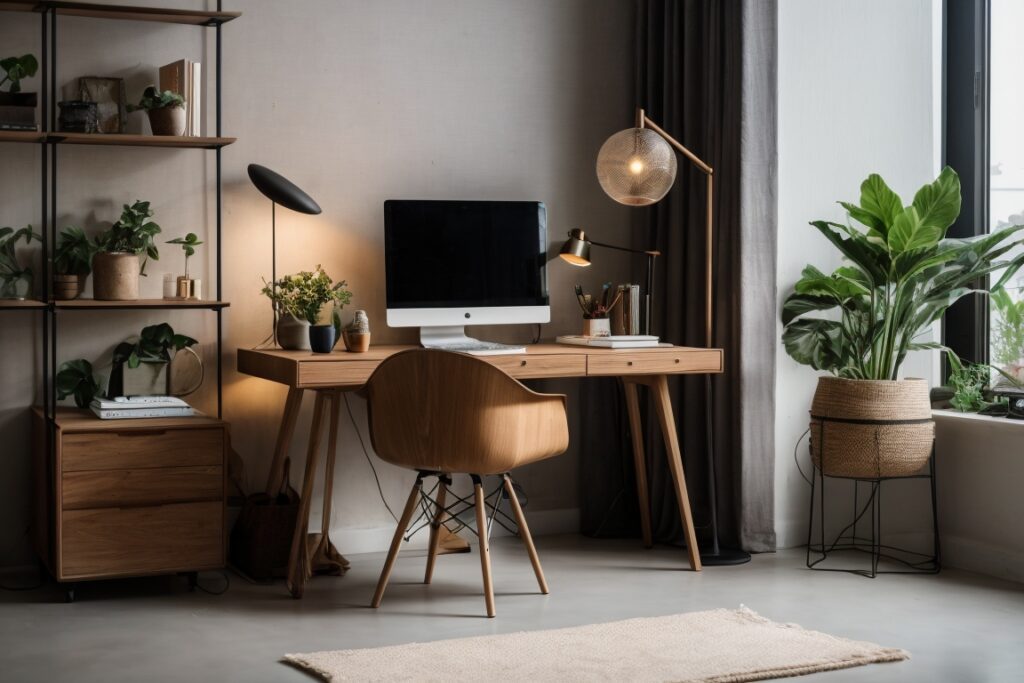
The workspace, a sanctuary for creativity, productivity, and focused effort, plays a crucial role in our lives. It’s a space where ideas take form, goals are achieved, and dreams are set in motion. Let’s delve into the diverse world of workspaces, exploring elements that foster functionality, inspiration, and a sense of well-being.
Desk: The desk, the central hub of any workspace, serves as your command center for tackling tasks and unleashing your creative spirit. Choose a desk that offers ample surface space for your computer, paperwork, and essential tools. Consider adjustable desks for added ergonomic benefits and flexibility. Opt for a desk with drawers or storage compartments to keep your workspace organized and clutter-free.
Right Chair: A comfortable and supportive chair is essential for maintaining good posture and preventing fatigue during long work hours. Explore ergonomic office chairs with adjustable features to ensure optimal comfort and support. Consider kneeling chairs or standing desks for alternative postures that promote movement and prevent back pain.
Storage Solutions: Maximize your workspace efficiency by incorporating well-designed storage solutions. Utilize shelves, cabinets, and organizers to keep essential documents, files, and office supplies readily accessible and neatly arranged. Explore wall-mounted storage options to free up floor space and create a visually uncluttered environment.
Light Up Your Work: Lighting plays a vital role in creating a productive and focused work environment. Opt for natural light whenever possible, but supplement it with task lighting like desk lamps to illuminate your work area effectively. Consider using warm and inviting lighting for a more relaxed atmosphere or cooler tones for enhanced alertness and focus.
Beyond the Basics: Infusing Inspiration and Well-being:
Elevate your workspace experience by incorporating elements that spark creativity and promote well-being:
- Plants and flowers: Add a touch of nature and improve air quality with greenery.
- Inspirational artwork: Surround yourself with images that motivate and inspire you.
- Aromatherapy diffusers: Use essential oils to enhance focus and create a calming atmosphere.
- Ergonomic accessories: Invest in wrist rests, keyboard trays, and other accessories to prevent repetitive strain injuries.
- Personal touches: Add photos, mementos, or other personal items to create a sense of ownership and belonging.
Creating a Space that Suits Your Needs:
Consider the type of work you do and your personal preferences when designing your workspace:
- Freelancers: Opt for flexible furniture and multi-functional spaces.
- Home-based professionals: Create a dedicated workspace that minimizes distractions.
- Remote workers: Consider incorporating video conferencing capabilities and collaborative tools.
- Creative professionals: Design a workspace that encourages brainstorming and idea generation.
Your workspace is an extension of your personality and work style. Embrace its potential and unleash your creativity within its walls. Design a workspace that motivates you, fuels your productivity, and allows you to thrive in your endeavors.
Furniture Styles: A Journey through Design and Aesthetics
The world of furniture styles offers a diverse landscape of design philosophies, catering to various tastes and preferences. Let’s embark on a journey through six distinct furniture styles, exploring their defining characteristics and the emotions they evoke:
1. Modern Style: A Symphony of Clean Lines and Minimalist Elegance
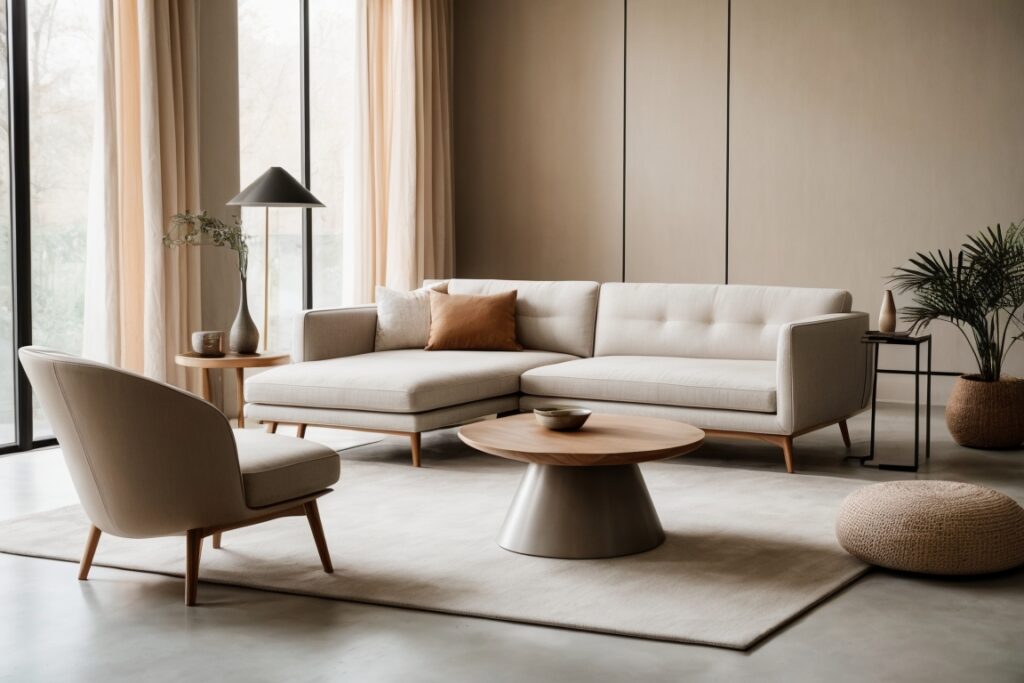
The modern furniture style, a masterpiece of simplicity and functionality, has captivated design enthusiasts for decades. Its essence lies in clean lines, minimal design, and a neutral color palette, creating a space that is both visually uncluttered and calming. Let’s delve deeper into the captivating world of modern furniture and explore its defining characteristics, materials, and how best to incorporate it into your living space.
Defining Features:
- Clean Lines and Geometric Shapes: Modern furniture eschews excessive ornamentation and embraces geometric shapes, such as squares, rectangles, and circles. This creates a sense of order and visual clarity that is central to the modern aesthetic.
- Minimalist Design: Functionality takes center stage in modern furniture, with each element serving a purpose and superfluous details stripped away. This minimalist approach emphasizes the intrinsic beauty of form and materials.
- Neutral Color Palette: Modern furniture typically relies on a neutral color palette of white, black, gray, and beige. These colors offer a sense of calm and serenity, allowing for pops of color and bold statements through artwork, accessories, and accents.
- Focus on Natural Materials: Modern designers often favor natural materials like wood, leather, steel, and glass. These materials add warmth and texture to the space while also showcasing their inherent beauty and quality.
- Low-profile Seating: Modern furniture often incorporates low-profile seating with minimal embellishments. This creates a sense of openness and spaciousness in the room, making it ideal for smaller living areas.
Materials and Finishes:
- Wood: High-quality wood finishes like oak, walnut, and maple are commonly used in modern furniture. These woods offer a timeless elegance and warmth to the space.
- Leather: Leather adds a touch of luxury and sophistication to modern furniture. It is available in a variety of colors and finishes, allowing for personalization and customization.
- Metal: Chrome and stainless steel are popular choices for metal accents in modern furniture. They add a sleek and modern touch while also providing durability.
- Glass: Glass is used extensively in modern furniture, particularly for tabletops and shelving units. It creates a sense of openness and allows light to flow freely through the space.
- Lacquered Finishes: Lacquered finishes, available in various colors and gloss levels, add a vibrant and modern touch to furniture pieces.
Incorporating Modern Style into your Home:
- Start with a neutral base: Paint your walls a neutral color like white, gray, or beige to create a clean and modern canvas.
- Choose furniture with clean lines and minimal details: Look for furniture with geometric shapes and simple silhouettes, avoiding pieces with excessive ornamentation.
- Mix and match materials: Create visual interest by combining different materials like wood, leather, and metal in your furniture choices.
- Embrace negative space: Don’t overcrowd your space with furniture. Allow for plenty of open space to emphasize the clean lines and minimalist aesthetic.
- Add pops of color with accents: Introduce vibrant colors and patterns through artwork, textiles, and accessories to add personality and visual interest.
Modern furniture: More than just a style, it is a philosophy of living that embraces simplicity, functionality, and a connection to natural materials. By incorporating modern elements into your home, you can create a space that is both aesthetically pleasing and conducive to relaxation and well-being. Remember, modern style is timeless and versatile, allowing you to create a unique and personalized haven that reflects your individual taste and personality.
2. Traditional Furniture: A Touch of History and Warmth for Your Home
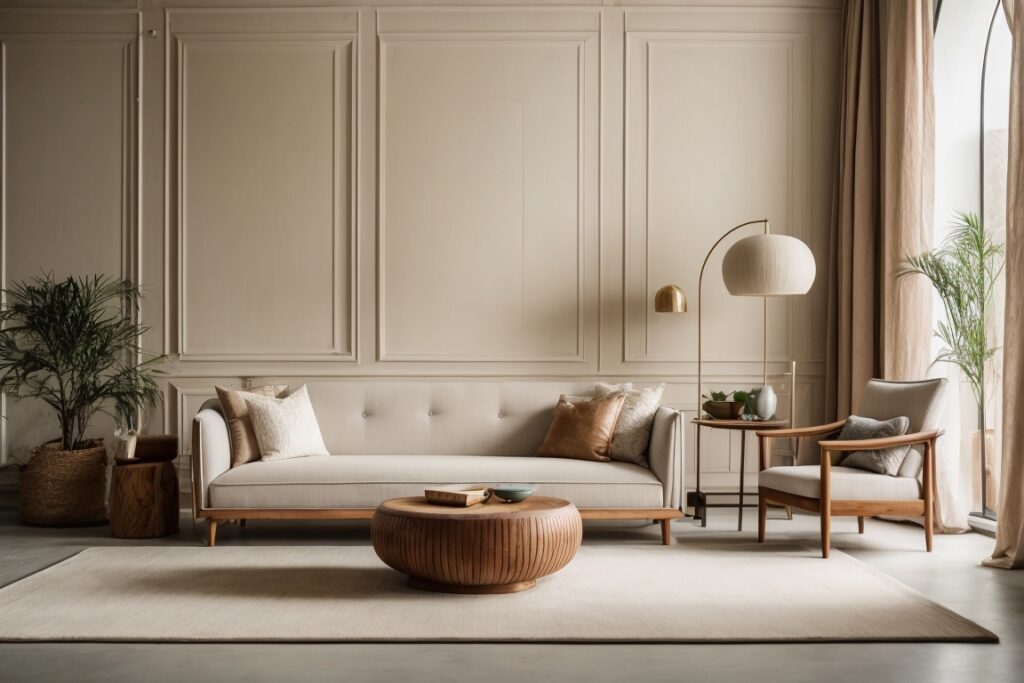
Traditional furniture, a timeless testament to craftsmanship and heritage, transcends fleeting trends and embodies enduring elegance. Its intricate details, classic shapes, and warm colors evoke a sense of comfort, stability, and historical connection, making it the perfect choice for those who appreciate the finer things in life. Let’s delve deeper into the world of traditional furniture, exploring its defining characteristics, popular materials, and how to incorporate its timeless charm into your home.
Defining Characteristics:
- Ornate Details: Traditional furniture is characterized by its intricate details, such as carvings, moldings, and decorative hardware. These details add a touch of sophistication and craftsmanship to the piece, making it a focal point of any room.
- Classic Shapes: Traditional furniture typically features classic shapes, such as curved lines, rolled arms, and cabriole legs. These shapes evoke a sense of timelessness and elegance, creating a warm and inviting atmosphere.
- Warm Colors: Rich, warm colors like mahogany, cherry, and walnut are commonly used in traditional furniture. These colors exude a sense of comfort and luxury, creating a welcoming and inviting space.
- High-Quality Materials: Traditional furniture is often made with high-quality materials, such as solid wood, leather, and upholstery fabrics. These materials are known for their durability and timeless beauty, ensuring that your furniture pieces will last for generations.
- Emphasis on Comfort: Traditional furniture prioritizes comfort with plush upholstery, generous padding, and supportive seating. This allows you to relax in style and enjoy the warmth and comfort of your home.
Popular Materials:
- Solid Wood: Mahogany, cherry, walnut, and oak are popular choices for traditional furniture due to their beauty, durability, and natural warmth.
- Leather: Leather upholstery adds a touch of luxury and sophistication to traditional furniture. It is available in a variety of colors and finishes to suit your taste.
- High-Quality Fabrics: Traditional furniture often features upholstery fabrics like velvet, damask, and brocade. These fabrics add a touch of richness and texture to the piece.
- Antique Brass Hardware: Antique brass hardware, such as drawer pulls and hinges, adds a touch of history and authenticity to traditional furniture.
Incorporating Traditional Style into Your Home:
- Start with a neutral base: Paint your walls a neutral color like beige or cream to create a calming backdrop for your traditional furniture.
- Choose statement pieces: Select a few key pieces of traditional furniture, such as a wingback armchair, a grandfather clock, or a mahogany dining table, to act as focal points in your room.
- Mix and match styles: Don’t be afraid to mix traditional furniture with other styles, such as modern or mid-century modern, to create a unique and personalized look.
- Layer textures and patterns: Use rugs, throws, and pillows with traditional patterns and textures to add visual interest and depth to your space.
- Accessorize with antiques and heirlooms: Display antiques and heirlooms alongside your traditional furniture to add a personal touch and connect your space to its history.
Traditional furniture: More than just a style, it is a legacy passed down through generations. By incorporating traditional elements into your home, you can create a space that is both timeless and elegant, offering a sense of comfort, stability, and connection to the past. Remember, traditional furniture is an investment in quality and craftsmanship, providing you with pieces that will be cherished for years to come.
3. Mid-Century Modern Style:
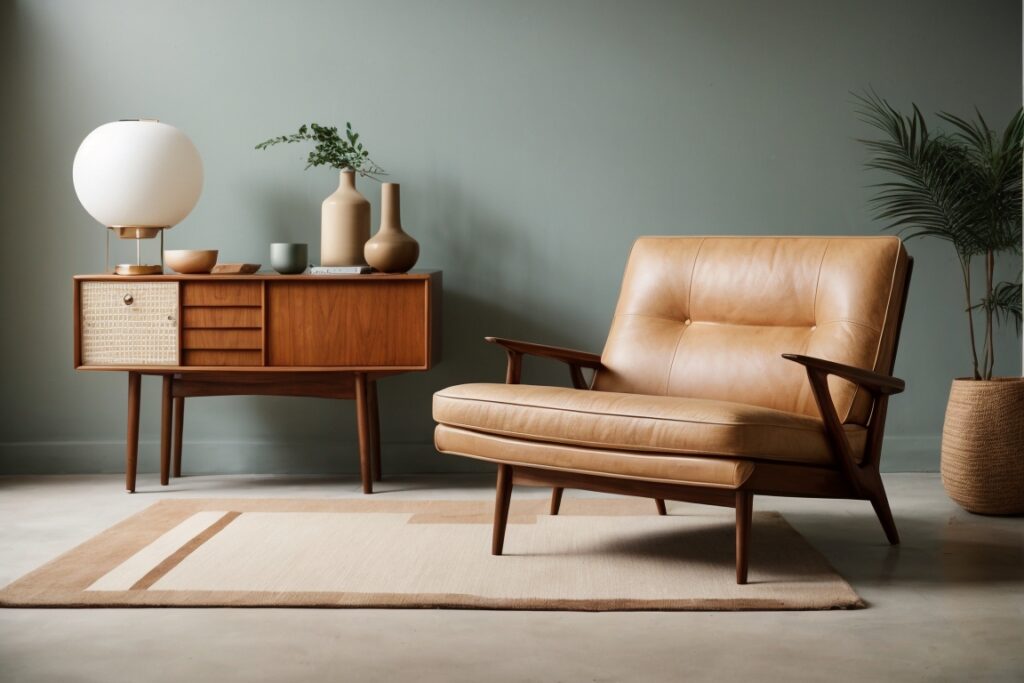
Mid-century modern furniture, a captivating blend of form and function, embodies the optimism and innovation of the post-war era. Defined by organic shapes, tapered legs, and a focus on natural materials, this style continues to captivate design enthusiasts with its timeless appeal and playful charm. Let’s embark on a journey through the world of mid-century modern furniture, exploring its defining characteristics, iconic pieces, and how to incorporate its vibrant energy into your living space.
Defining Characteristics:
- Organic Shapes: Mid-century modern furniture moves away from rigid lines and embraces organic shapes, such as curves, arches, and rounded corners. This creates a sense of dynamism and movement, adding visual interest to your space.
- Tapered Legs: A hallmark of mid-century modern furniture is the use of tapered legs, often made of wood or metal. These legs create a sense of lightness and airiness, making furniture pieces appear to float above the ground.
- Natural Materials: Mid-century modern designers championed the use of natural materials, such as wood, leather, and wicker. These materials add warmth and texture to the space, creating a connection to nature and promoting a sense of well-being.
- Functionality: While emphasizing aesthetics, mid-century modern furniture prioritizes functionality. Pieces are designed to be both beautiful and practical, with storage solutions and multi-functional features incorporated seamlessly.
- Playful Design: Mid-century modern furniture embraces a playful and optimistic spirit. Bold colors, geometric patterns, and unique textures add a touch of whimsy and vibrancy to the space.
Iconic Mid-Century Modern Pieces:
- Eames Lounge Chair: This iconic armchair, designed by Charles and Ray Eames, is a masterpiece of both design and comfort. Its sleek lines, molded plywood shell, and luxurious leather upholstery make it a timeless piece for any living space.
- Barcelona Chair: Designed by Mies van der Rohe, the Barcelona chair embodies elegance and simplicity. Its minimalist design, featuring a chrome frame and leather cushions, is a perfect example of the mid-century modern aesthetic.
- Tulip Table: This table, designed by Eero Saarinen, features a single pedestal base that eliminates the need for legs. Its sleek and modern design makes it a popular choice for dining tables and coffee tables.
- Wishbone Chair: This iconic chair, designed by Hans J. Wegner, is known for its Y-shaped back and comfortable seat. Its simple design and organic form make it a versatile piece that can be used in any room.
- Noguchi Coffee Table: This coffee table, designed by Isamu Noguchi, features a biomorphic shape and a glass top supported by a wooden base. Its unique design and artistic sensibility make it a conversation starter in any living room.
Incorporating Mid-Century Modern Style into your Home:
- Start with a neutral base: Paint your walls a neutral color like white, gray, or beige to create a clean canvas for your mid-century modern furniture.
- Mix and match materials: Combine different materials like wood, metal, and leather to add visual interest and depth to your space.
- Embrace bold colors and patterns: Don’t be afraid to incorporate bold colors and geometric patterns into your décor through artwork, textiles, and accessories.
- Focus on natural light: Mid-century modern furniture thrives in natural light. Maximize natural light in your space to create a bright and airy atmosphere.
- Add pops of greenery: Plants add a touch of life and vibrancy to your mid-century modern space. Choose plants with clean lines and interesting shapes to complement the style.
Mid-century modern furniture: More than just a style, it is a celebration of innovation, optimism, and the beauty of natural materials. By embracing its playful spirit and timeless design, you can create a living space that is both functional and aesthetically pleasing. Remember, mid-century modern furniture is a versatile style that can be adapted to suit your taste and personality, allowing you to create a truly unique and captivating home.
4. Industrial Style: Rough Elegance and Urban Inspiration for Your Home
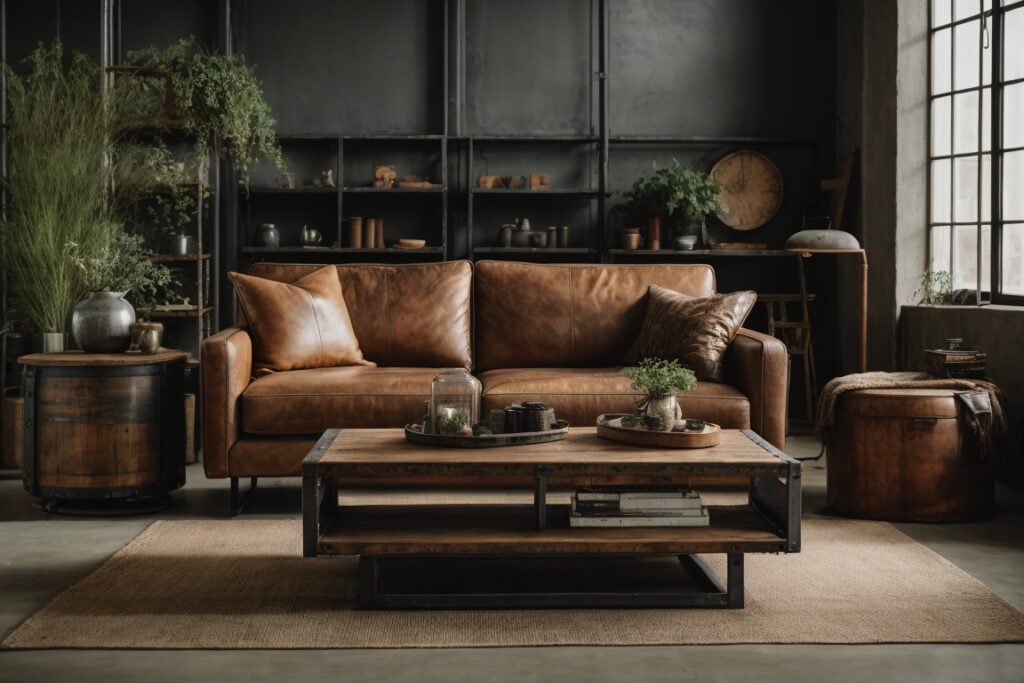
Industrial furniture, drawing inspiration from raw materials and urban landscapes, embraces a unique aesthetic that celebrates the beauty of exposed textures and utilitarian design. With its metal accents, exposed hardware, and often repurposed materials, this style offers a touch of rugged charm and urban sophistication to your living space. Let’s delve deeper into the world of industrial furniture, exploring its defining characteristics, popular materials, and how to incorporate its edgy personality into your home.
Defining Characteristics:
- Metal Accents: Exposed metal accents, such as steel frames, iron pipes, and rivets, are a hallmark of industrial furniture. They add a touch of rawness and industrial flair to the pieces, creating a bold and eye-catching statement.
- Exposed Hardware: Bolts, screws, and other hardware elements are often left exposed in industrial furniture, adding to its utilitarian aesthetic and celebrating the craftsmanship behind the piece.
- Repurposed Materials: Industrial furniture often utilizes salvaged materials, such as reclaimed wood, vintage factory parts, and industrial lighting fixtures. This gives the pieces a unique history and adds a touch of authenticity to the space.
- Raw Materials: Exposed brick walls, concrete floors, and rough-hewn wood are frequently used in industrial spaces, providing the perfect backdrop for industrial furniture.
- Functional Design: Industrial furniture emphasizes functionality above all else. Pieces are designed to be durable and practical, often featuring clean lines and minimal ornamentation.
Popular Materials:
- Metal: Steel, iron, and aluminum are commonly used in industrial furniture for their strength and durability. They add a cool, industrial feel to the pieces and create a stark contrast with other materials.
- Reclaimed Wood: Repurposed wood, such as barn wood or salvaged floorboards, adds warmth and texture to industrial furniture while also offering a sustainable option.
- Leather: Distressed leather upholstery adds a touch of luxury and sophistication to industrial furniture. Its aged appearance complements the raw materials and creates a sense of lived-in comfort.
- Concrete: This durable material is often used in countertops and flooring for its industrial look and resistance to wear and tear.
- Glass: Glass tabletops and shelving units add a touch of lightness and airiness to industrial spaces, helping to balance the heavier materials.
Incorporating Industrial Style into Your Home:
- Start with the basics: Choose a neutral color palette like black, gray, and white for your walls and flooring to provide a clean backdrop for your industrial furniture.
- Mix and match textures: Combine different textures like smooth metal, rough wood, and soft leather to add visual interest and depth to your space.
- Embrace exposed elements: Don’t be afraid to leave brick walls or concrete floors exposed, as they contribute to the industrial aesthetic.
- Add vintage touches: Incorporate vintage industrial pieces, such as antique factory lamps or salvaged metal lockers, to add character and a sense of history to your space.
- Accessorize with statement pieces: Choose unique light fixtures, sculptures, or wall art with industrial themes to add personality and complete the look.
Industrial Furniture: More than just a style, it is a statement of individuality and a celebration of raw materials and urban inspiration. By incorporating its bold personality and functional design into your home, you can create a living space that is both unique and inviting. Remember, industrial style is all about embracing the beauty of imperfection and celebrating the inherent character of materials. Let your space tell a story with unexpected textures, bold colors, and a touch of urban grit.
5. Scandinavian Style: A Journey through Lightness, Functionality, and Natural Beauty
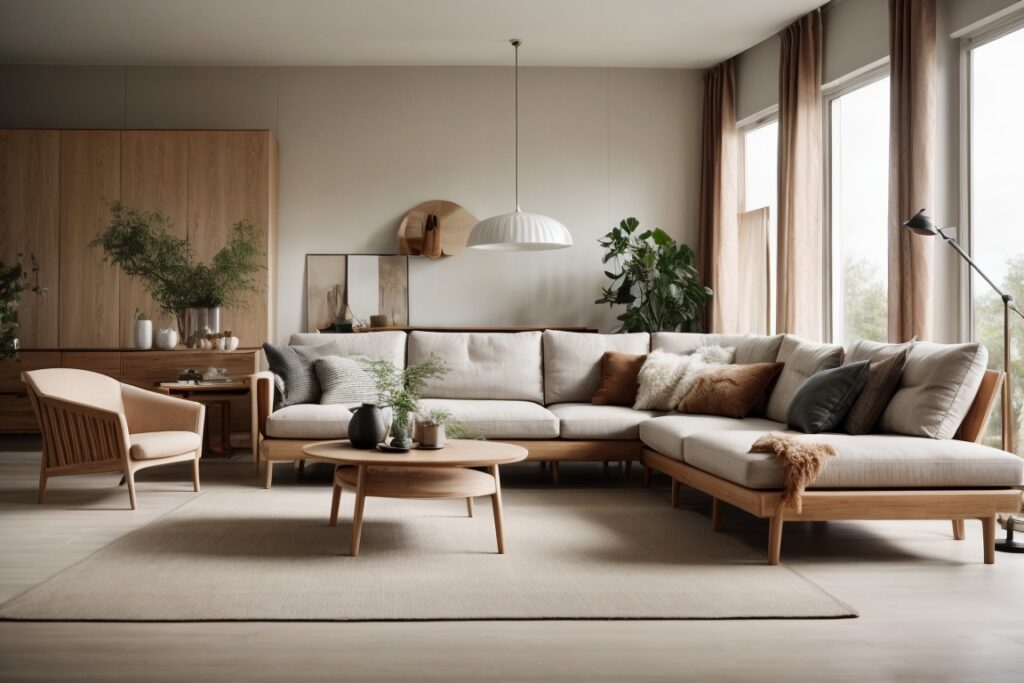
Scandinavian furniture, a captivating symphony of light, clean lines, and natural materials, has captivated design enthusiasts for decades. Its minimalist approach, emphasis on functionality, and focus on creating light and airy spaces have made it a popular choice for modern homes. Let’s delve deeper into the world of Scandinavian furniture, exploring its defining characteristics, popular materials, and how to incorporate its serene aesthetic into your living space.
Defining Characteristics:
- Minimalism: Scandinavian furniture embraces a minimalist approach, prioritizing clean lines, simple designs, and a lack of clutter. This philosophy creates a sense of calm and order, allowing the natural beauty of the materials to shine through.
- Functionality: Every element in Scandinavian furniture serves a purpose. Pieces are designed to be both beautiful and practical, maximizing space and providing ample storage solutions.
- Light and Airy: Scandinavian furniture prioritizes light and airiness. Light wood tones, open shelving units, and sleek silhouettes create a feeling of spaciousness even in smaller living areas.
- Natural Materials: Wood, especially light-toned varieties like birch and pine, takes center stage in Scandinavian furniture. Other natural materials like leather, wool, and linen are also commonly used, adding warmth and texture to the space.
- Focus on Craftsmanship: Scandinavian furniture is known for its high-quality craftsmanship and attention to detail. Joinery techniques are often exposed, showcasing the skill and care put into each piece.
Popular Materials:
- Light Wood: Birch, pine, and oak are popular choices for Scandinavian furniture due to their light color and natural grain patterns. They create a sense of warmth and serenity, adding a touch of nature indoors.
- Leather: Leather upholstery adds a touch of luxury and sophistication to Scandinavian furniture. Light-colored leathers are preferred to maintain the light and airy feel, while darker tones can add contrast and visual interest.
- Wool: Wool rugs and blankets are commonly used in Scandinavian spaces for their warmth and natural texture. They add a cozy touch to the space and complement the light wood tones.
- Linen: Linen upholstery and textiles are a popular choice for their natural look and soft texture. They add a touch of elegance and simplicity to the space, creating a calming and inviting atmosphere.
- Glass: Glass tabletops and shelving units add a sense of lightness and airiness to Scandinavian furniture. They allow natural light to flow through the space and contribute to the minimalist aesthetic.
Incorporating Scandinavian Style into your Home:
- Start with a clean canvas: Paint your walls white or a light neutral color to create a bright and airy backdrop for your Scandinavian furniture.
- Choose natural materials: Opt for furniture made from wood, leather, wool, and linen to bring the beauty of nature into your space.
- Embrace minimalism: Avoid clutter and prioritize clean lines and simple designs to create a sense of order and tranquility.
- Maximize natural light: Let in as much natural light as possible by using sheer curtains and avoiding heavy window treatments.
- Add pops of color: Introduce small touches of color through artwork, textiles, or accessories to add visual interest and prevent the space from feeling too sterile.
6. Bohemian Spirit: A Journey through Color, Texture, and Eclectic Charm

Bohemian furniture, a vibrant celebration of individuality and creative expression, embraces a unique aesthetic that transcends rigid rules and thrives on a joyful mix of textures, patterns, and vibrant colors. This style is perfect for those who love to tell a story through their décor and embrace a free-spirited approach to design. Let’s delve deeper into the world of bohemian furniture, exploring its defining characteristics, popular elements, and how to incorporate its playful energy into your living space.
Defining Characteristics:
- Eclectic Mix: Bohemian furniture embraces an eclectic mix of styles, periods, and origins. Vintage pieces, handcrafted finds, and cultural influences are all welcome, creating a space that is both unique and personal.
- Vibrant Colors: Bold and contrasting colors are a hallmark of bohemian style. From rich jewel tones to playful pastels, color is used to add energy, personality, and a sense of vibrancy to the space.
- Rich Textures: Bohemian furniture celebrates the beauty of textures. Layering different textiles, such as velvet, linen, and woven fabrics, adds depth and visual interest to the space.
- Pattern Play: Bohemian style thrives on a playful mix of patterns. Floral prints, geometric motifs, and ethnic designs are all welcome, creating a dynamic and visually stimulating environment.
- Handcrafted and Personal Touches: Bohemian furniture often incorporates handcrafted pieces, unique finds, and personal touches that tell a story. This adds a sense of authenticity and reflects the individual personality of the homeowner.
Popular Elements:
- Vintage Finds: Antique furniture, vintage rugs, and salvaged pieces add history and charm to the bohemian space. These items often carry unique stories and contribute to the eclectic atmosphere.
- Handmade Textiles: Woven throws, hand-stitched pillows, and tapestries add warmth and texture to the space. These items often showcase traditional craftsmanship and add a personal touch.
- Global Influences: Bohemian style embraces elements from different cultures, such as Moroccan lanterns, Turkish rugs, and Indian textiles. This adds diversity and a touch of exotic charm to the space.
- Plants and Greenery: Lush greenery adds a touch of life and vibrancy to the bohemian space. Plants are often incorporated in different ways, from hanging planters to large floor plants.
- Statement Artwork: Bold and colorful artwork is a staple of bohemian style. It adds a focal point to the space and reflects the homeowner’s personality and interests.
Incorporating Bohemian Style into your Home:
- Embrace color: Don’t be afraid to use bold colors and contrasting shades to create a vibrant and energetic atmosphere.
- Mix and match patterns: Play with different patterns and textures to add visual interest and depth to your space.
- Layer textiles: Use throws, pillows, rugs, and blankets to create a warm and inviting atmosphere.
- Incorporate vintage and handmade pieces: Add personal touches and tell a story through your décor by incorporating vintage finds and handcrafted items.
- Don’t be afraid to be unique: Bohemian style thrives on individuality. Express your personality and create a space that reflects your unique taste and interests.
The user of furniture:
Furniture, beyond mere objects, plays a crucial role in shaping our living spaces and enhancing our daily lives. However, it’s not a one-size-fits-all solution. The needs of each user group differ significantly, requiring furniture designed specifically for their comfort, safety, and enjoyment. Let’s explore how furniture adapts to meet the unique needs of various users:
1. Kids:
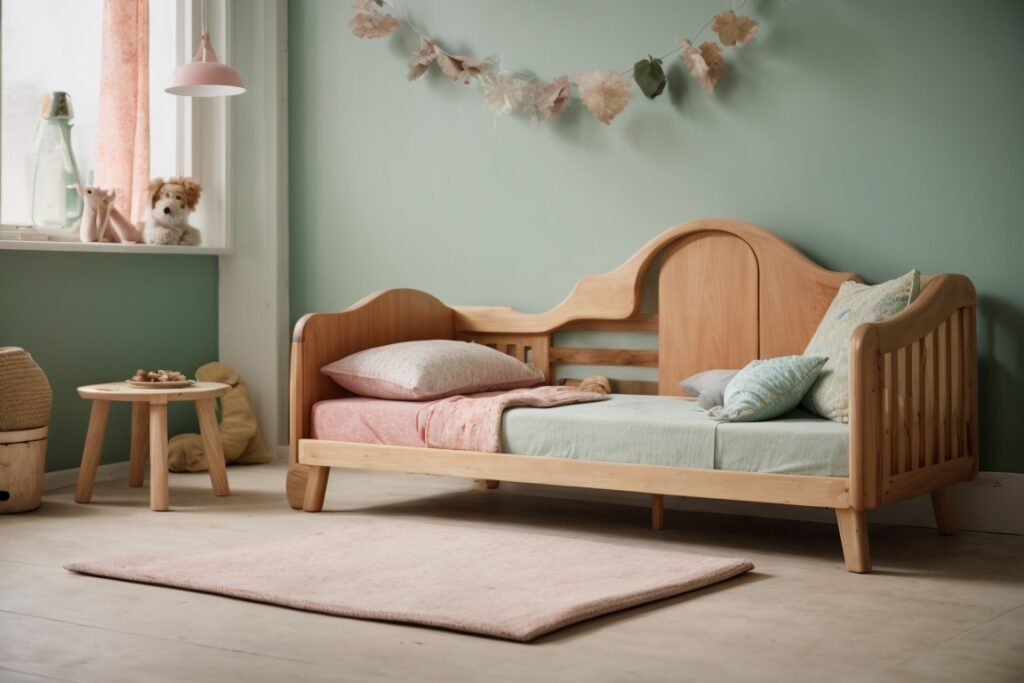
- Fun and playful designs: Children thrive in spaces that spark their imagination and encourage play. Furniture with bright colors, engaging shapes, and playful patterns can transform a room into a magical haven for their creativity.
- Safe and durable materials: Choosing furniture made from non-toxic, sturdy materials like solid wood or high-quality plastics is essential for ensuring the safety and well-being of children.
- Rounded edges and corners: Sharp corners can lead to accidents. Furniture with rounded edges and corners minimizes the risk of injuries and creates a safer environment for children to explore and learn.
- Adjustable and multi-functional furniture: As children grow quickly, furniture that adapts to their changing needs is crucial. Adjustable desks and chairs, for instance, can provide years of comfort and support.
- Storage solutions: Toys, books, and other belongings can quickly accumulate, making storage solutions essential. Furniture with built-in storage compartments or ottomans with storage space helps keep children’s rooms organized and clutter-free.
2. Seniors:
- Comfortable and supportive furniture: Seniors require furniture that provides ample support and promotes good posture. Chairs with high backs, adjustable armrests, and comfortable cushions help maintain proper alignment and alleviate back pain.
- Easy to adjust and move: Seniors may have reduced mobility, making it crucial to choose furniture that is lightweight and easy to adjust. Recliners with lift-assist features and sofas with adjustable heights can provide the comfort and support they need.
- Sturdy and stable furniture: Falls can be a serious concern for seniors. Opting for furniture with a wide base, sturdy legs, and non-slip surfaces helps prevent accidents and promotes independence.
- Ergonomic design: Furniture with ergonomic features, such as padded armrests and contoured seats, can significantly improve comfort and reduce fatigue for seniors.
- Accessible features: Consider furniture with built-in features like pull-out drawers, easy-grip handles, and raised toilet seats to improve accessibility and ease of use for seniors.
3. Pets:
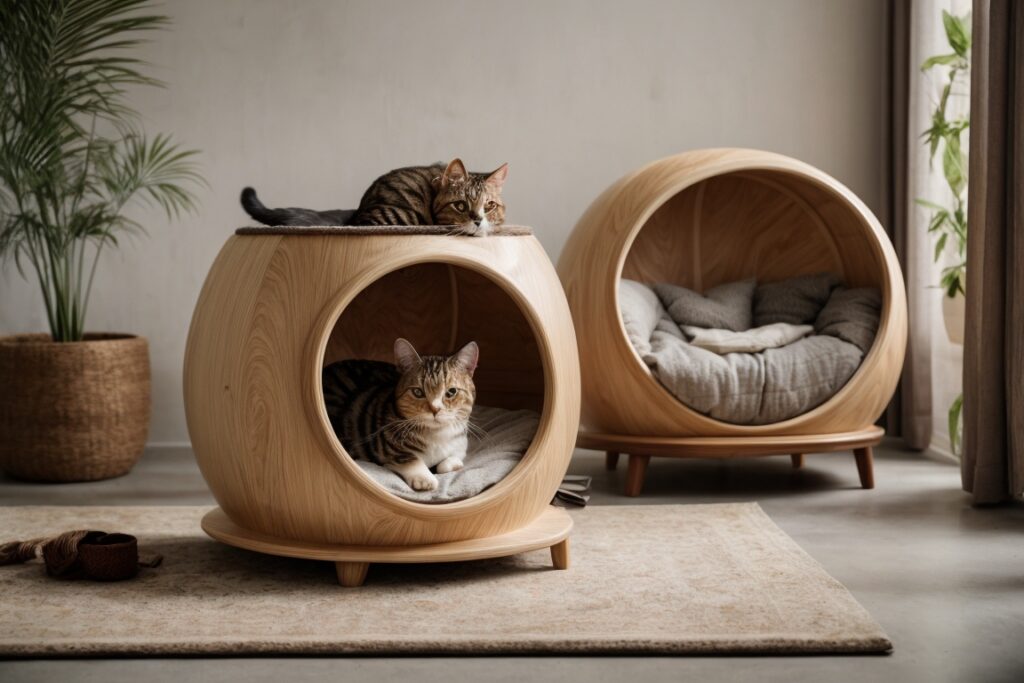
- Scratch-resistant fabrics: Pets can be tough on furniture. Choosing furniture with scratch-resistant fabrics like microfiber or leather can help protect it from claws and teeth.
- Easy-to-clean surfaces: Accidents happen. Opt for furniture with smooth surfaces that are easy to clean and disinfect to maintain a hygienic environment.
- Durable and chew-proof materials: Pets, especially puppies, may have a tendency to chew on furniture. Selecting furniture made from durable materials like wood or metal can help prevent damage.
- Elevated beds and perches: Cats and dogs appreciate having their own space. Elevated beds and perches provide them with a safe and cozy spot to relax and observe their surroundings.
- Interactive furniture: Playful furniture like scratching posts and climbing towers can help keep pets entertained and stimulated, preventing them from engaging in destructive behaviors.
4. Renters:
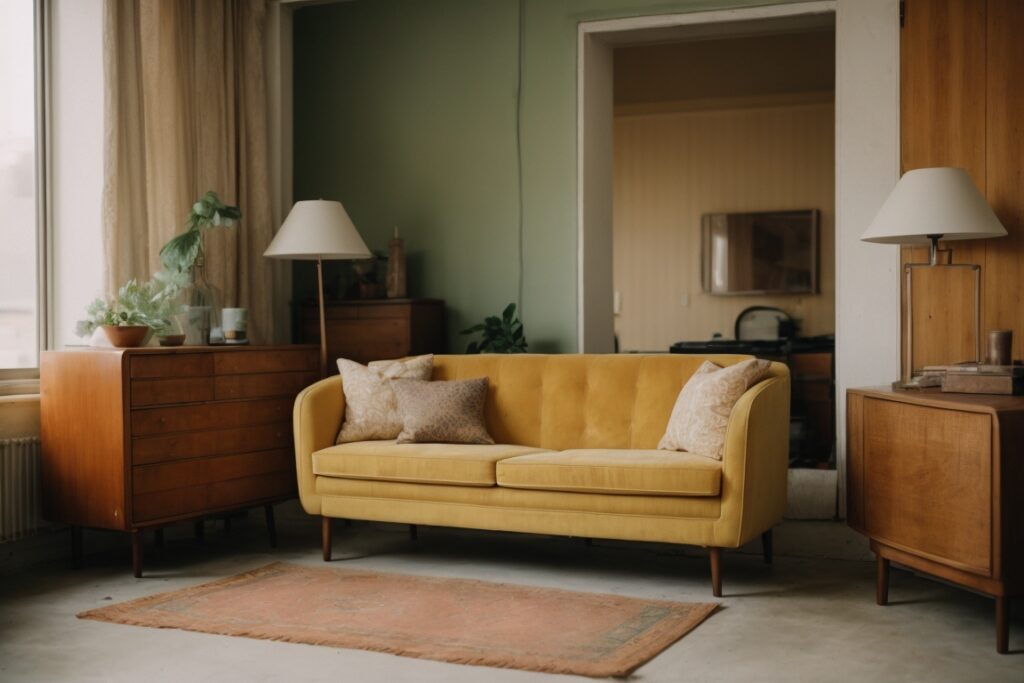
- Affordable and portable furniture: Frequent moves necessitate furniture that is both affordable and easy to transport. Lightweight pieces that can be easily disassembled and reassembled are ideal for renters.
- Multi-functional furniture: Space may be limited in rental units. Multi-functional furniture, such as futons that convert from sofas to beds, can help maximize space and accommodate different needs.
- Durable and easy to maintain: Opting for furniture made from sturdy materials that are easy to clean and maintain can help prevent damage and ensure its longevity throughout multiple moves.
- Neutral colors and styles: Choosing furniture with neutral colors and styles provides versatility and allows it to fit seamlessly into different living spaces.
- Foldable and stackable furniture: Foldable chairs and stackable tables can be easily stored when not in use, saving valuable space in smaller rental units.
5. Homeowners:
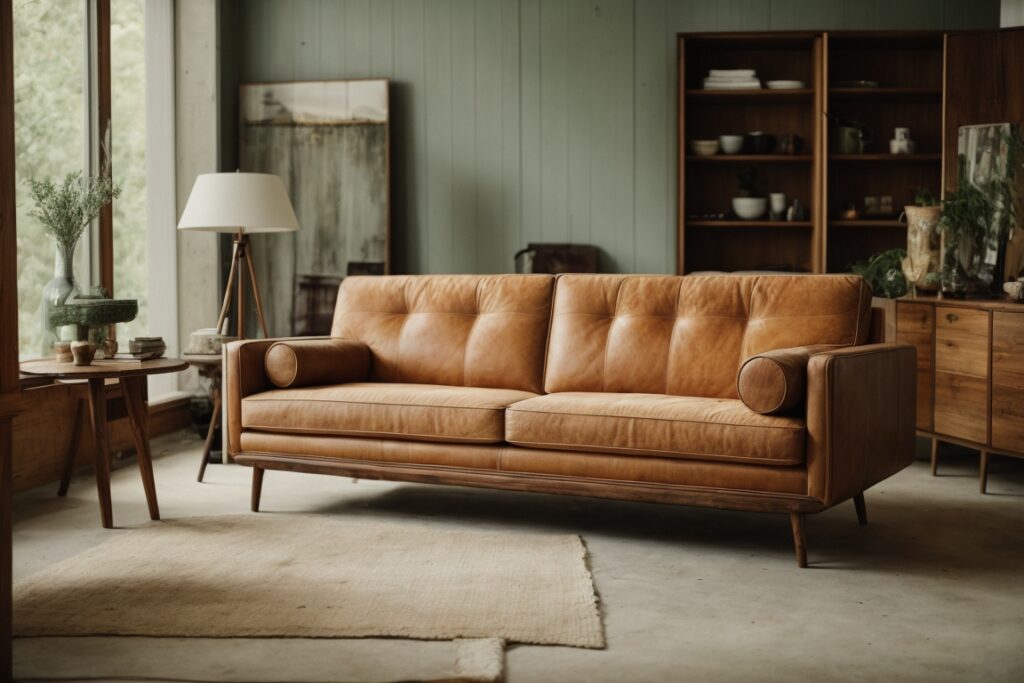
- High-quality and long-lasting furniture: Homeowners can invest in high-quality furniture made from solid wood, leather, and other durable materials, ensuring it will last for years to come.
- Personalized style: Homeowners have the freedom to choose furniture that reflects their tastes and preferences, creating a truly personalized living space.
- Investment pieces: Heirloom-quality furniture pieces can be passed down through generations, adding a touch of history and sentimental value to the home.
- Comfort and functionality: Homeowners can prioritize both comfort and functionality when choosing furniture, ensuring it meets their specific needs and contributes to a comfortable and enjoyable living environment.
- Sustainability: Eco-conscious homeowners can choose furniture made from sustainable materials like reclaimed wood, bamboo, and recycled plastic, contributing to a greener and healthier environment.
By understanding the diverse needs of different user groups and implementing design solutions that cater to each, furniture can become more than just objects of utility. It can transform into a tool for creating safe, comfortable, and aesthetically pleasing spaces that enhance the lives of everyone who uses them. Whether designing for playful children, active pets, or seniors seeking comfort, considering the specific requirements of each user group allows furniture to truly fulfill its purpose and contribute to a more fulfilling living experience for all.
Sustainability in Furniture: Choosing Eco-friendly Materials and Embracing Recycled Content
As we become increasingly conscious of our environmental impact, the sustainability of our furniture choices becomes paramount. Opting for eco-friendly materials and embracing recycled content are not just trendy options; they are powerful tools for promoting a greener future and creating a healthier home environment. Let’s delve deeper into these sustainable choices and explore how they can positively influence our homes and the planet.
1. Eco-friendly Materials:

- Wood: Choosing furniture made from sustainably harvested wood, certified by organizations like the Forest Stewardship Council (FSC), ensures responsible forestry practices and protects our precious natural resources.
- Bamboo: This fast-growing and renewable resource offers a sustainable alternative to traditional wood. Its strength, durability, and natural beauty make it a popular choice for furniture and flooring.
- Recycled materials: Repurposing existing materials like plastic bottles, aluminum cans, and scrap wood into furniture reduces landfill waste and minimizes the need for virgin materials.
- Natural fibers: Eco-friendly options like organic cotton, linen, and jute are biodegradable and offer a natural and sustainable alternative to synthetic fabrics.
- Low-VOC finishes: Opting for furniture finished with low-VOC (volatile organic compounds) paints and stains minimizes the release of harmful chemicals into the air, promoting a healthier indoor environment.
2. Recycled Content:
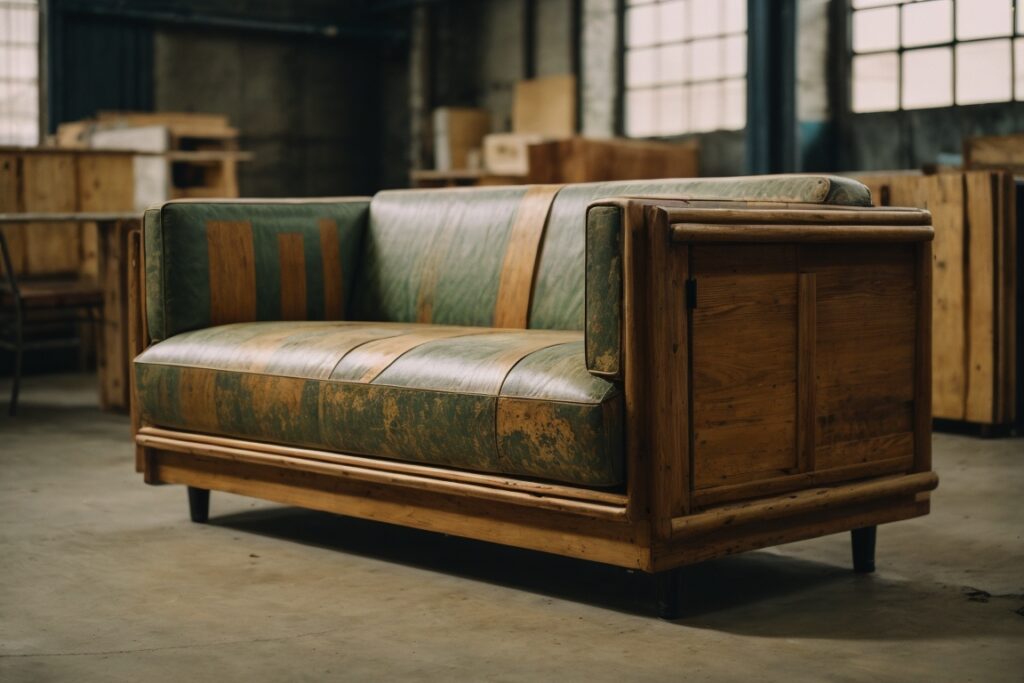
- Post-consumer recycled content: This refers to recycled materials that have already been used by consumers, such as plastic bottles or textiles. Choosing furniture with high post-consumer recycled content directly reduces waste and promotes resource efficiency.
- Pre-consumer recycled content: This includes materials that were diverted from the waste stream during the manufacturing process. Utilizing pre-consumer recycled content minimizes waste generated during production and contributes to a more closed-loop system.
- Reclaimed wood: This refers to salvaged wood from old buildings, barns, or other structures. Reclaimed wood offers a unique and rustic aesthetic while also preventing valuable resources from ending up in landfills.
- Recycled metal: Choosing furniture made from recycled aluminum, steel, or other metals significantly reduces the need for mining and refining new materials, thus minimizing environmental impact.
- Upcycled furniture: Giving new life to existing furniture by repairing, repurposing, or even reimagining its design is a creative and sustainable approach to furnishing your home.
Benefits of Eco-friendly and Recycled Content Furniture:
- Reduced environmental impact: Choosing sustainable furniture helps conserve natural resources, reduce greenhouse gas emissions, and minimize landfill waste, contributing to a healthier planet.
- Improved indoor air quality: Low-VOC finishes and natural materials promote a healthier indoor environment by minimizing the presence of harmful chemicals in the air we breathe.
- Uniqueness and character: Recycled and reclaimed materials often possess unique characteristics and imperfections that add an individual touch and tell a story, making your furniture truly special.
- Durability and longevity: Sustainable materials are often known for their strength and durability, ensuring that your furniture will last for years to come.
- Supporting a circular economy: By embracing recycled content and eco-friendly materials, you contribute to a circular economy where resources are reused and repurposed, minimizing waste and promoting resource conservation.
Price Spectrum: Choosing Furniture for Every Budget
Furniture, while a key element in creating a comfortable and stylish home, can vary greatly in price. Understanding the different price ranges and their defining characteristics empowers you to make informed decisions that align with your budget and desired aesthetic. Let’s explore the three main price categories of furniture: budget, mid-range, and high-end.
1. Budget Furniture:
- Price Range: $50-$500 per piece on average
- Materials: Primarily utilizes cost-effective materials like particle board, plywood, and laminate finishes.
- Construction: May be less sturdy and have simpler designs.
- Durability: May not last as long as higher-priced options and may be more prone to wear and tear.
- Style: Often features a contemporary or minimalist aesthetic.
- Best for: Individuals with limited budgets, frequent movers, or those seeking temporary solutions.
2. Mid-Range Furniture:
- Price Range: $500-$2,000 per piece on average
- Materials: Offers a wider range of materials, including solid wood, metal, and higher-quality fabrics.
- Construction: Features more robust construction techniques and incorporates sturdier joinery.
- Durability: Offers greater durability and can last for years with proper care.
- Style: Provides a wider variety of styles, from traditional and modern to mid-century modern and Scandinavian.
- Best for: Individuals seeking a balance between affordability and quality, those who want furniture to last, and those who have a specific style preference.
3. High-End Furniture:
- Price Range: Starts at $2,000 and can reach tens of thousands of dollars per piece
- Materials: Utilizes premium materials like solid hardwood, hand-stitched leather, and natural stone.
- Construction: Features exceptional craftsmanship, meticulous attention to detail, and heirloom-quality construction.
- Durability: Built to last for generations and often increases in value over time.
- Style: Offers a vast array of design styles, from classic and timeless pieces to avant-garde and designer creations.
- Best for: Individuals with substantial budgets, those seeking investment pieces, and collectors who appreciate exceptional craftsmanship and unique design.
Remember:
- Price isn’t everything: While higher-priced furniture often indicates better quality materials and construction, it is not the only factor to consider.
- Shop around: Compare prices from different retailers and brands before making a purchase.
- Prioritize your needs: Identify your essential furniture pieces and allocate a larger portion of your budget toward them.
- Invest in key pieces: Consider investing in high-quality, timeless pieces that will last for years, even if it means spending more upfront.
- Mix and match: Combine furniture from different price ranges to create a unique and personalized look.
- Consider second-hand options: Explore thrift stores, vintage shops, and online marketplaces for gently used furniture at a fraction of the price.
Ultimately, the best price range for furniture depends on your individual needs, budget, and desired aesthetic. By understanding the different options available and setting realistic expectations, you can make informed furniture choices that create a beautiful and comfortable home within your means.
In Conclusion:
Furniture transcends the realm of mere objects; it shapes our living spaces, reflects our personalities, and provides the foundation for daily life. From the playful designs that spark children’s imaginations to the comfort and support seniors seek, each piece serves a unique purpose and contributes to the overall well-being of its users.
Whether you prioritize eco-friendly materials, embrace the playful spirit of bohemian style, or seek the timeless elegance of Scandinavian design, understanding the diverse styles and their defining characteristics empowers you to create a home that truly reflects your taste and values.
By prioritizing functionality and comfort, considering your budget and needs, and embracing the diverse styles and materials available, you can transform your living space into a haven of comfort, style, and self-expression. Remember, furniture is not just a purchase; it is an investment that enhances your life and creates a space that fosters joy, connection, and meaningful experiences.
So, embark on your furniture journey with an open mind, embrace the possibilities, and let your home become a canvas for your creativity and personality. Design a space that speaks to your soul, reflects your unique story, and allows you to live life to the fullest, one comfortable and stylish piece at a time.


